

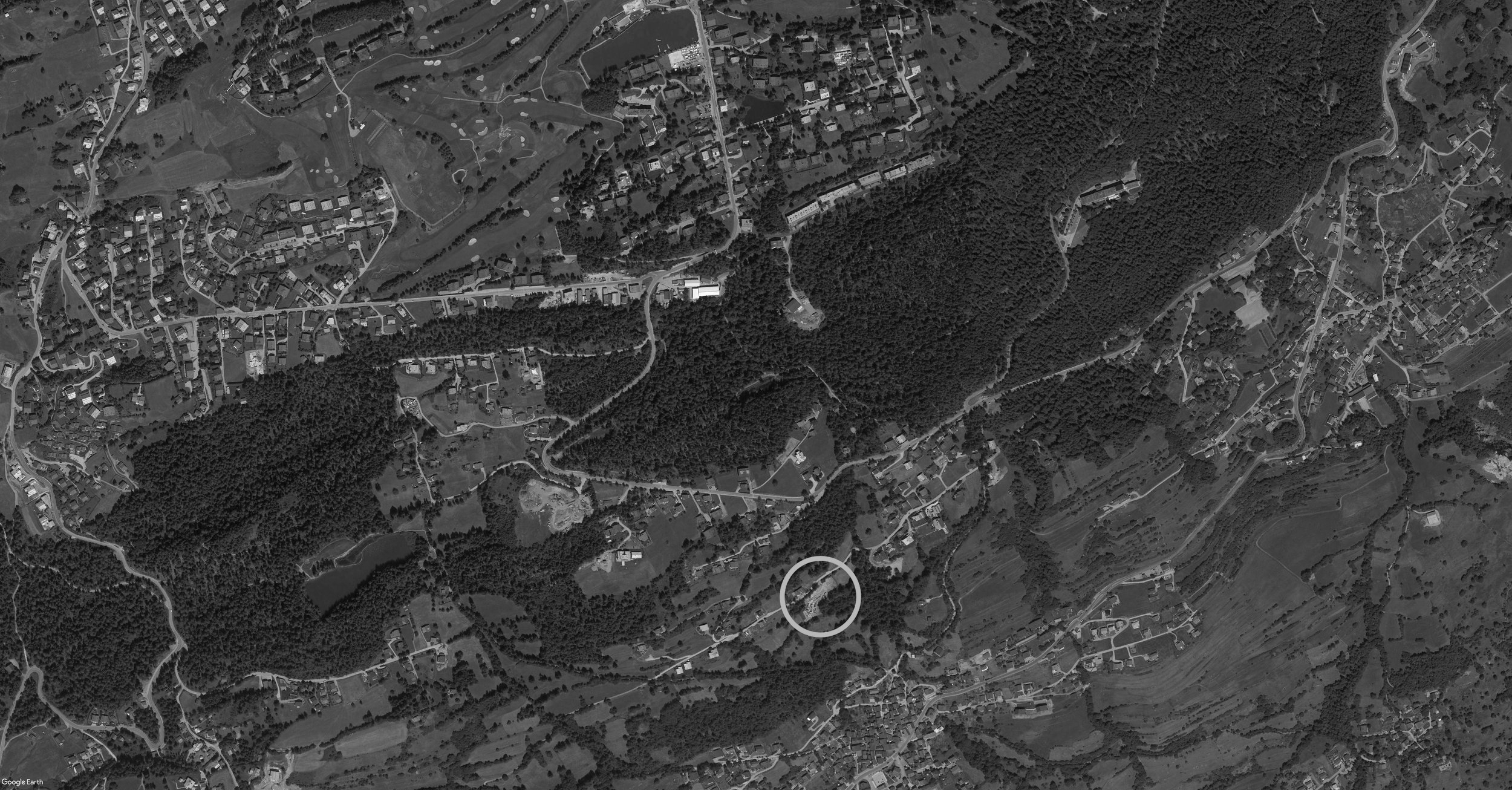
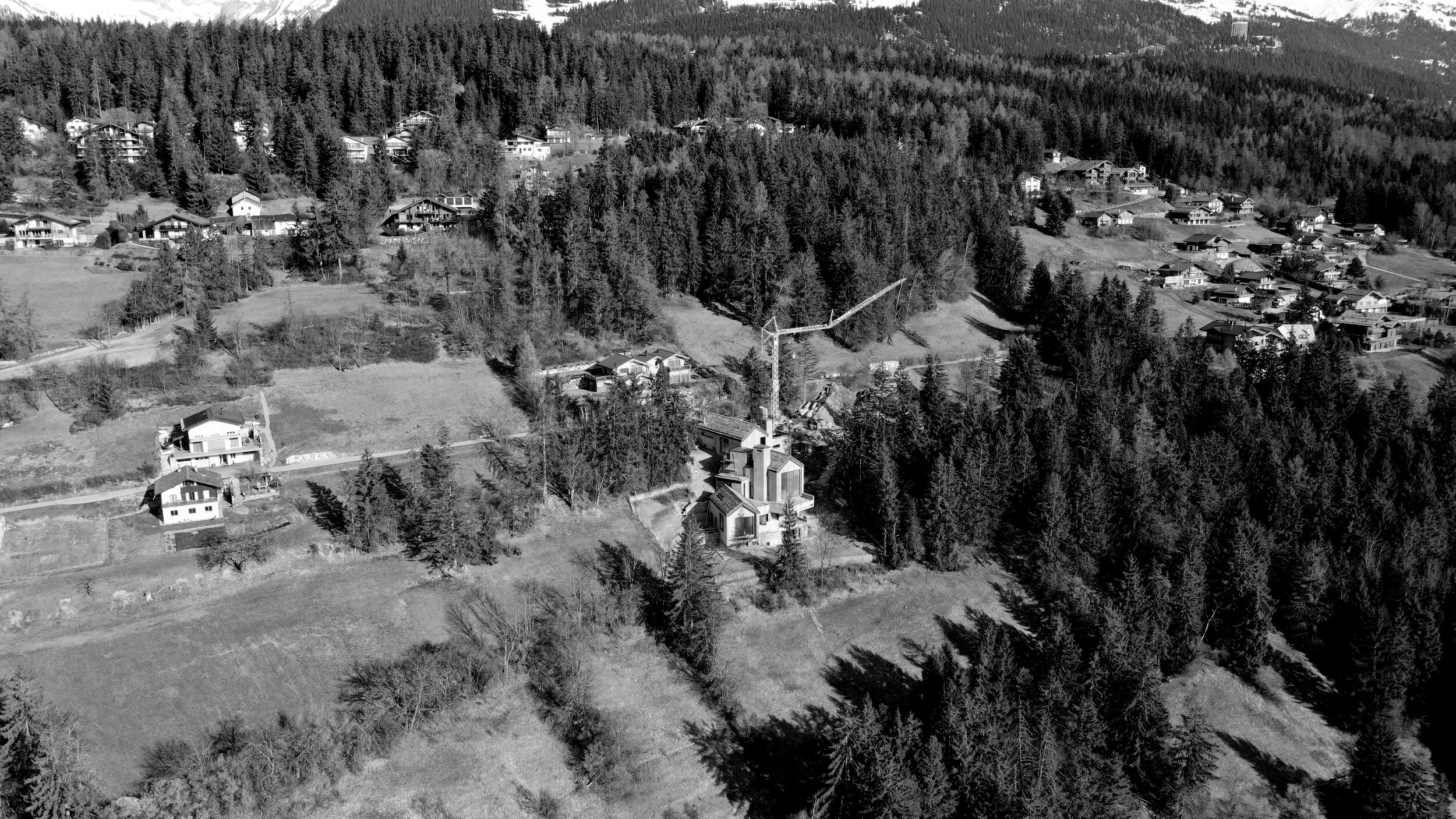

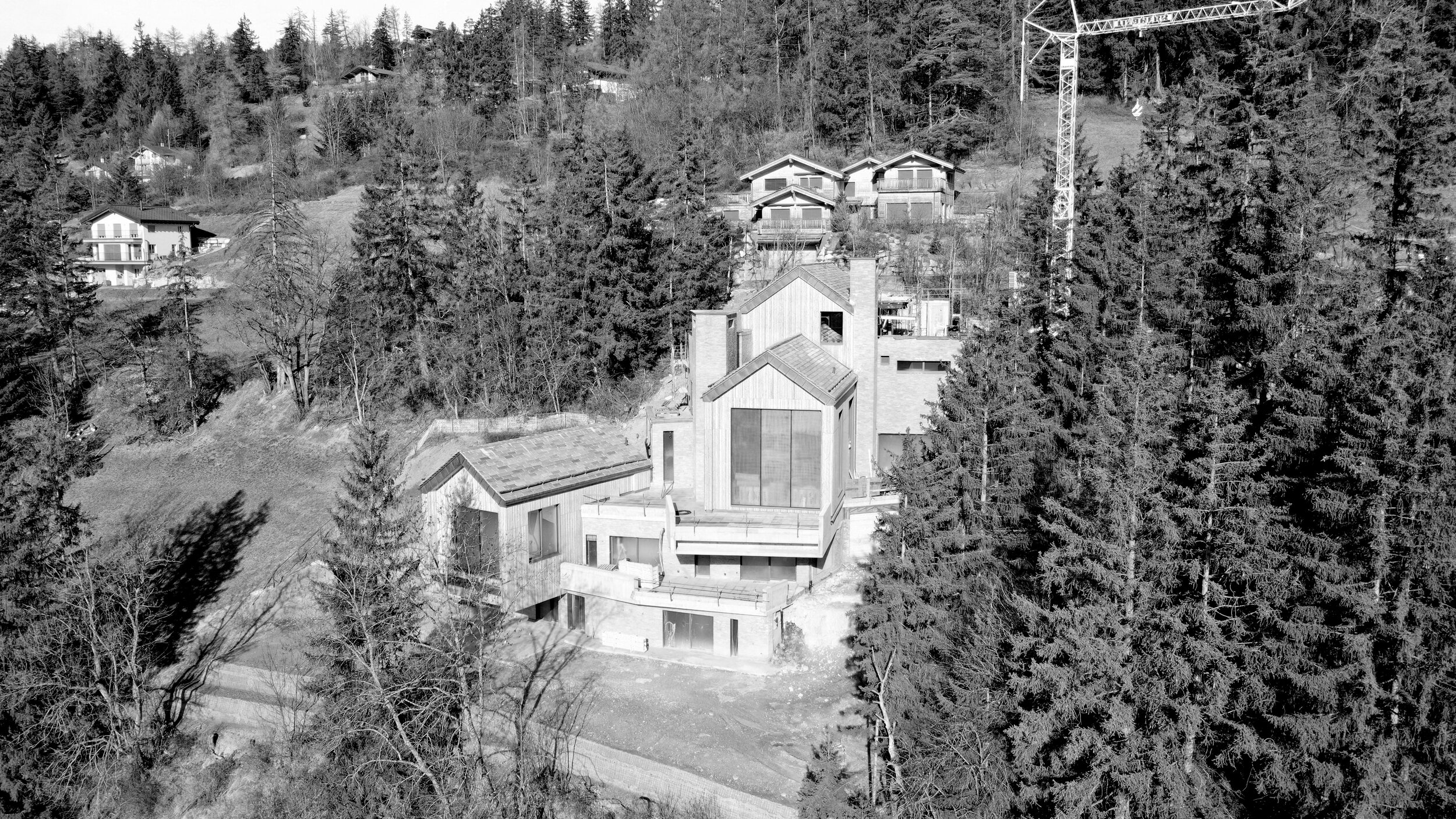
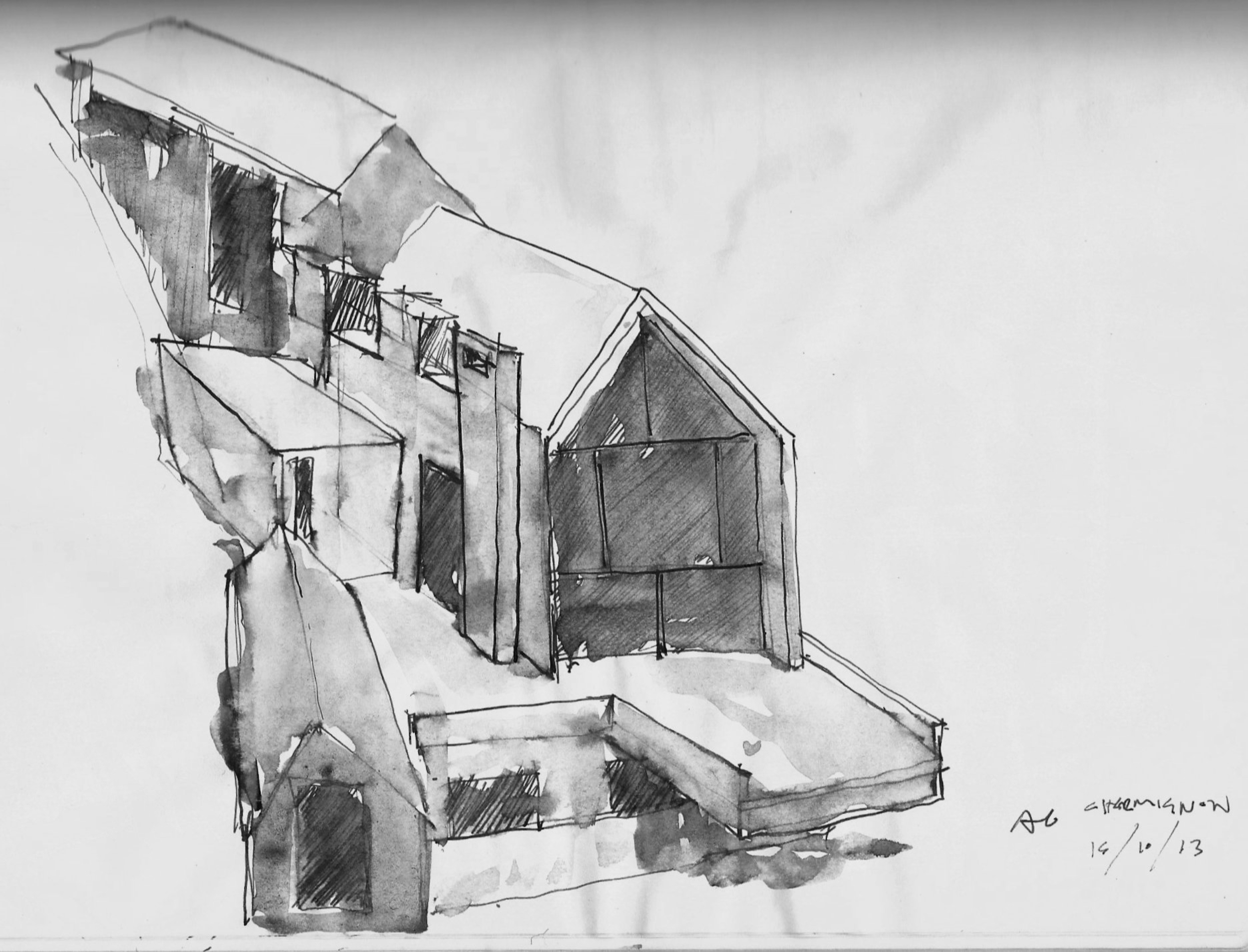
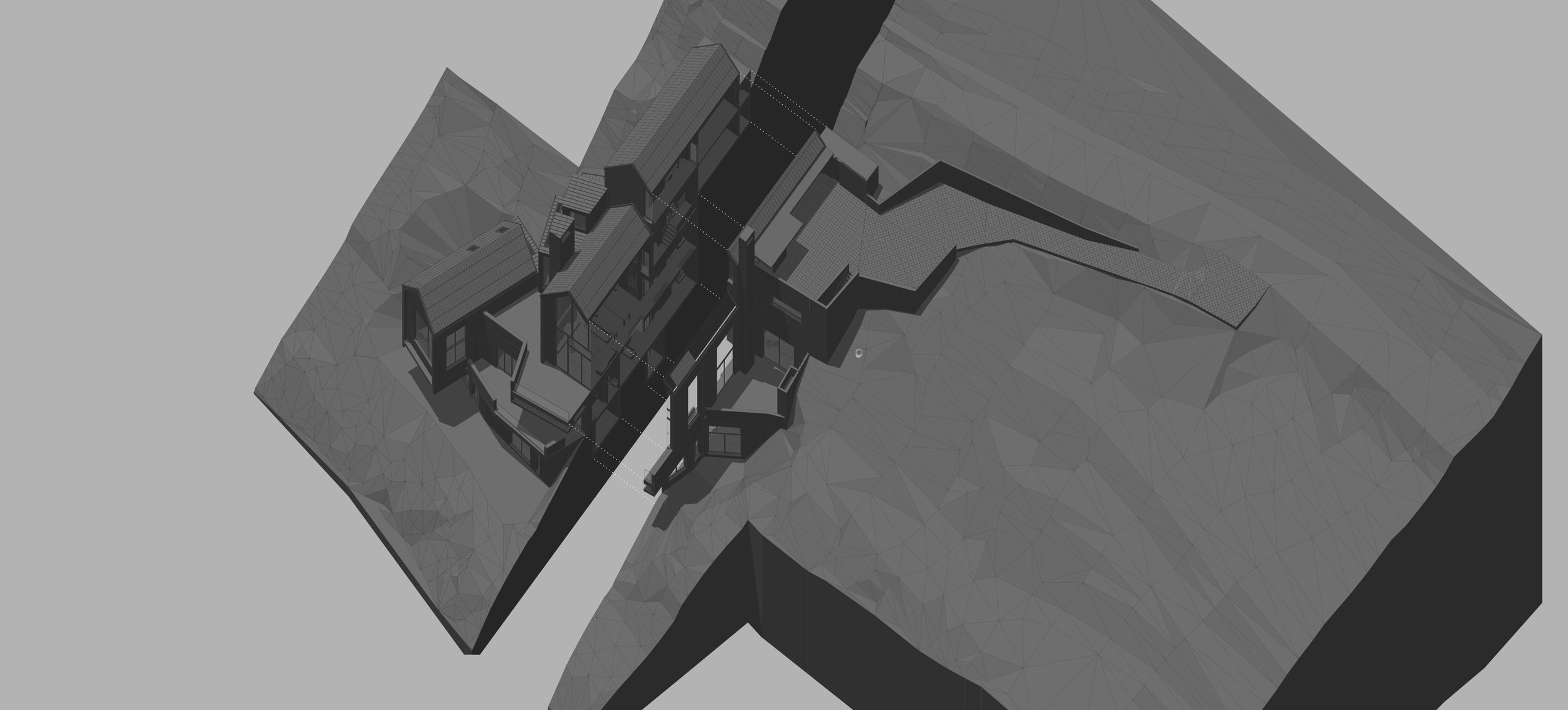
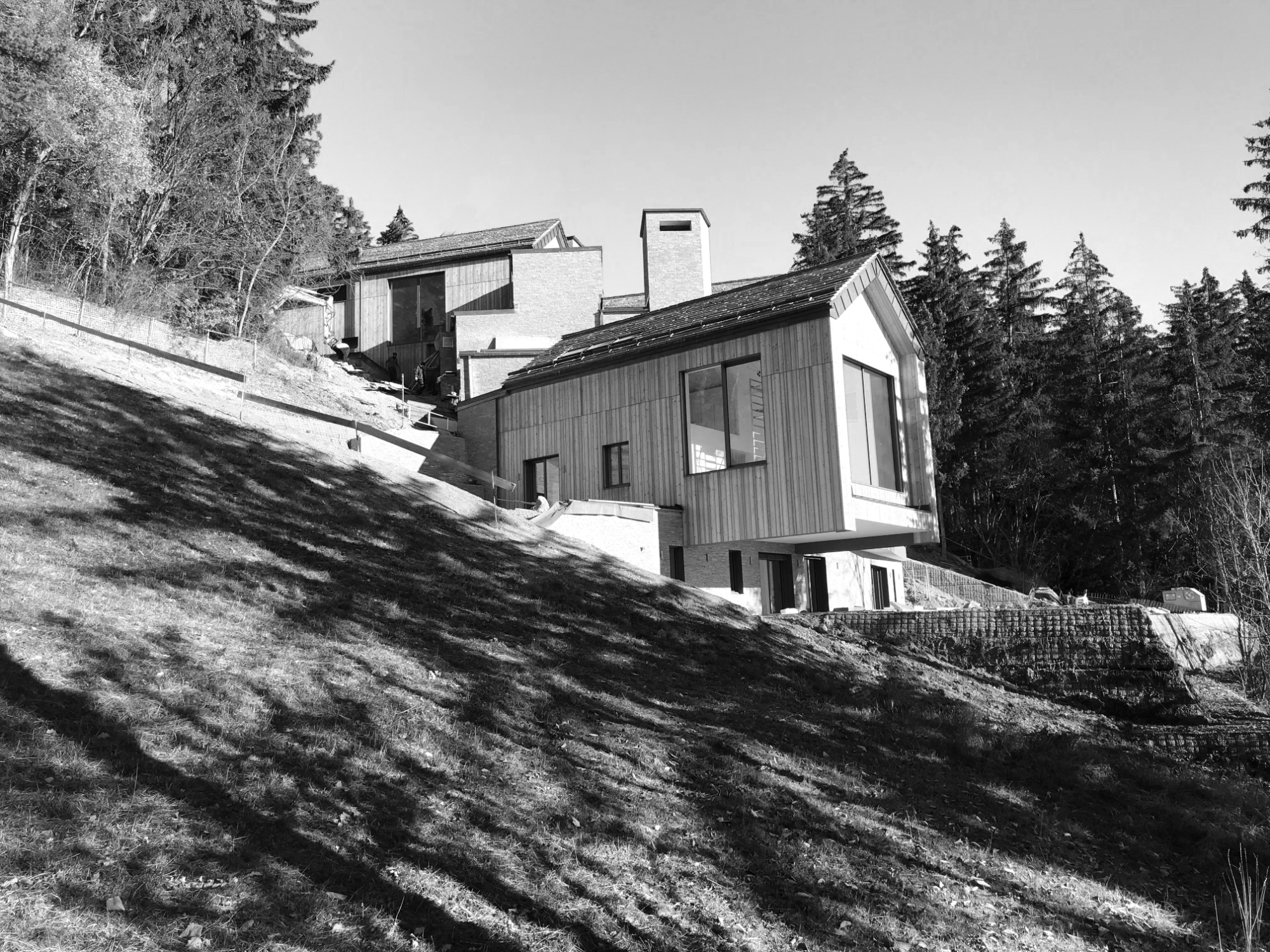
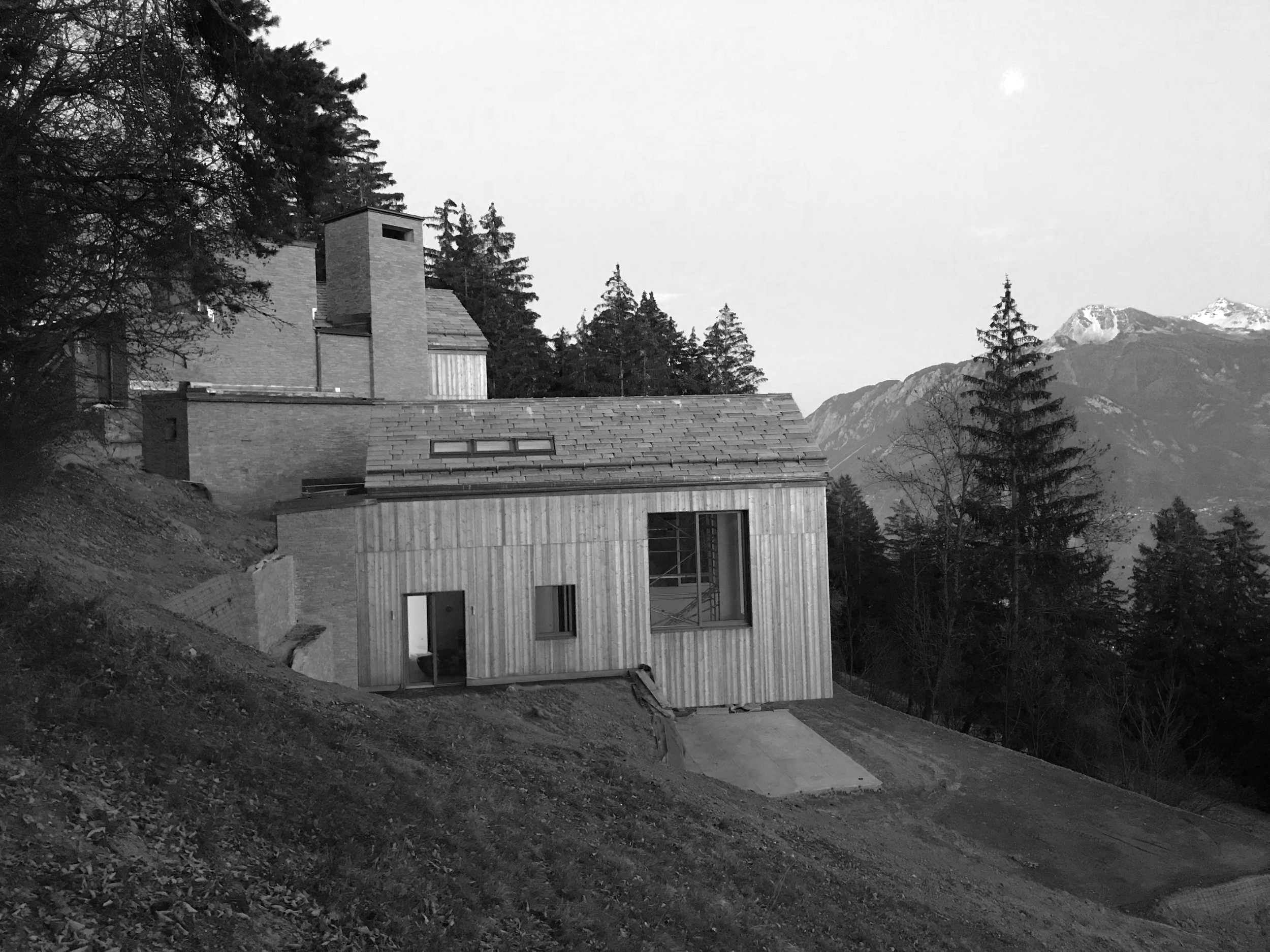
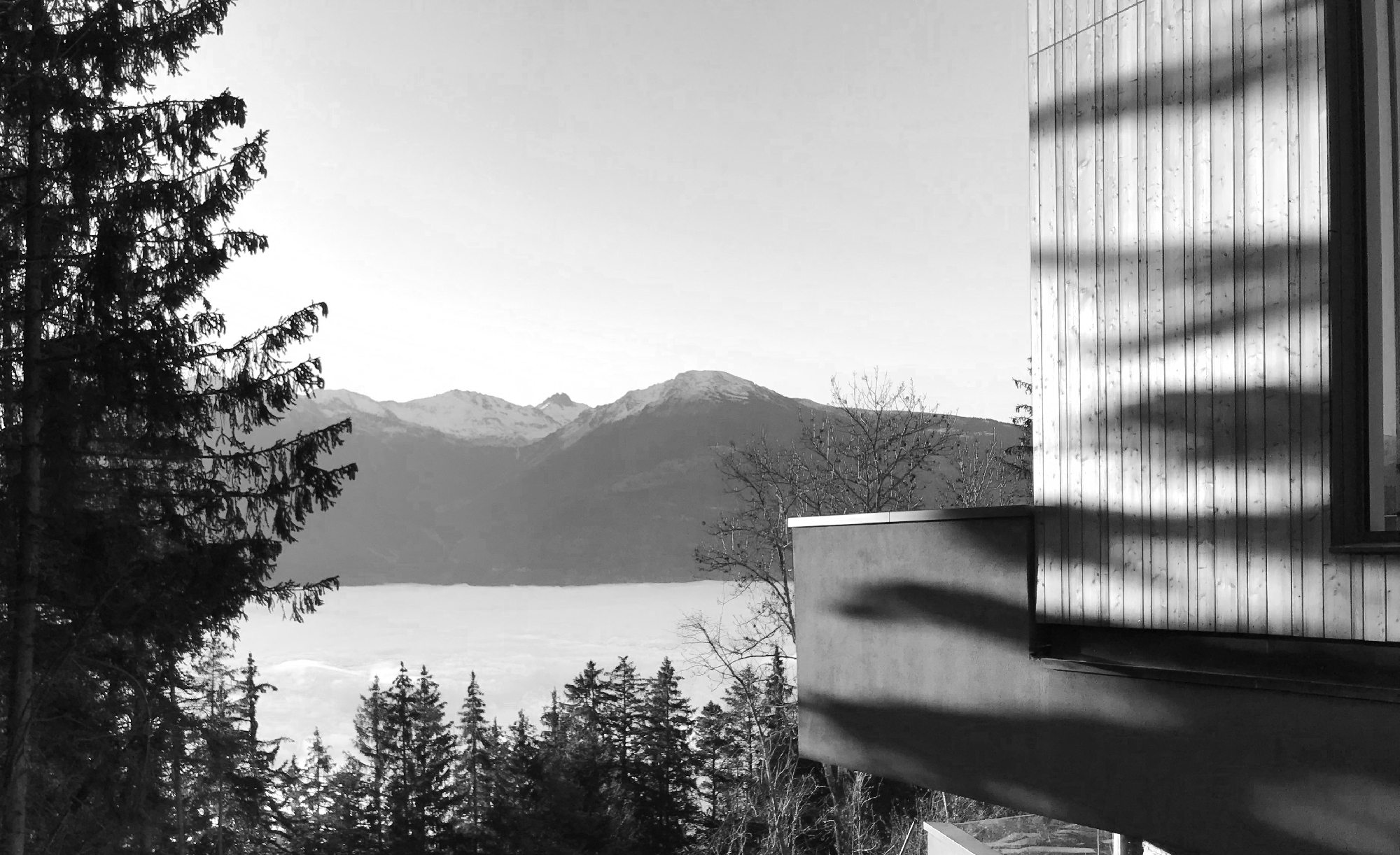
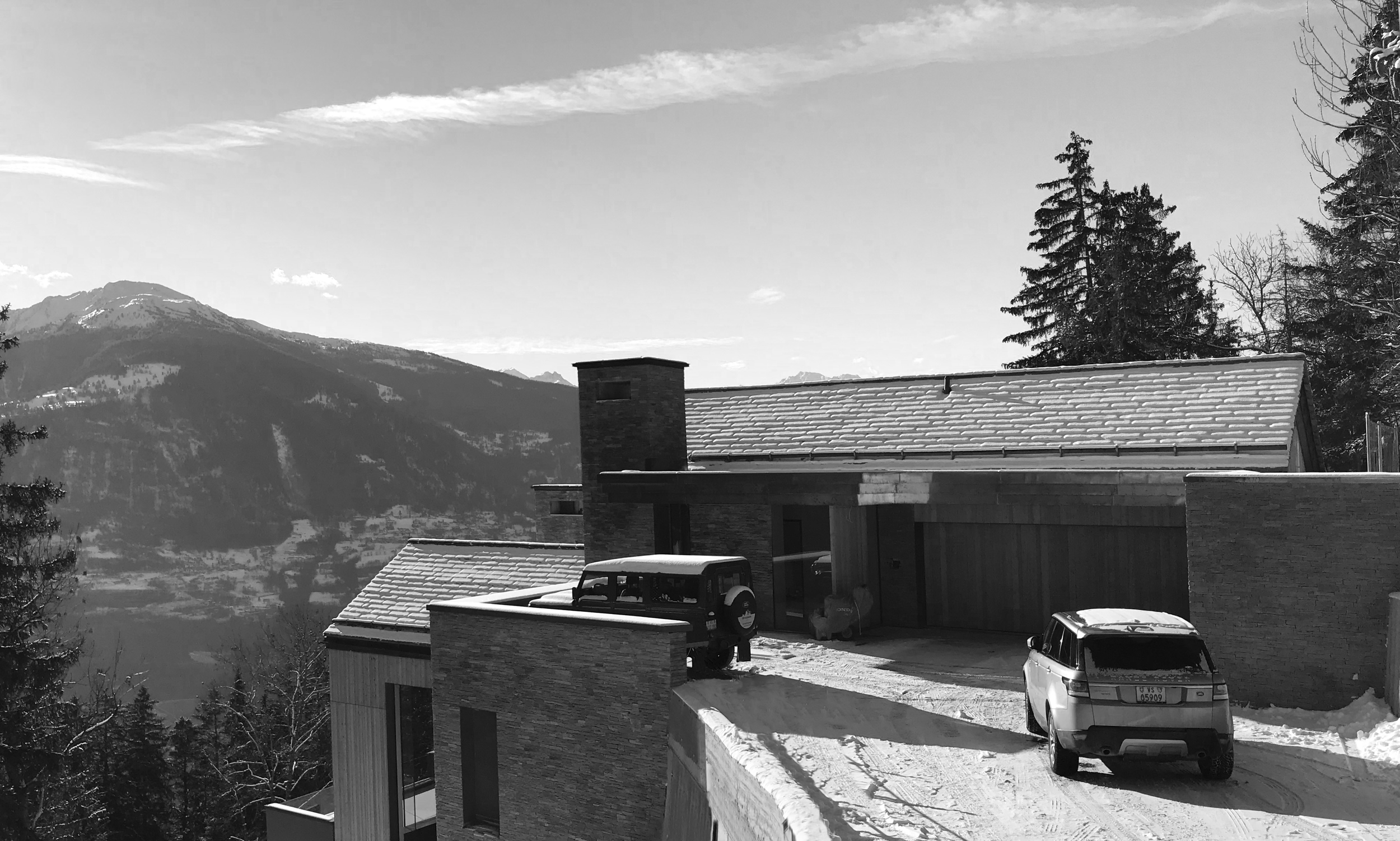
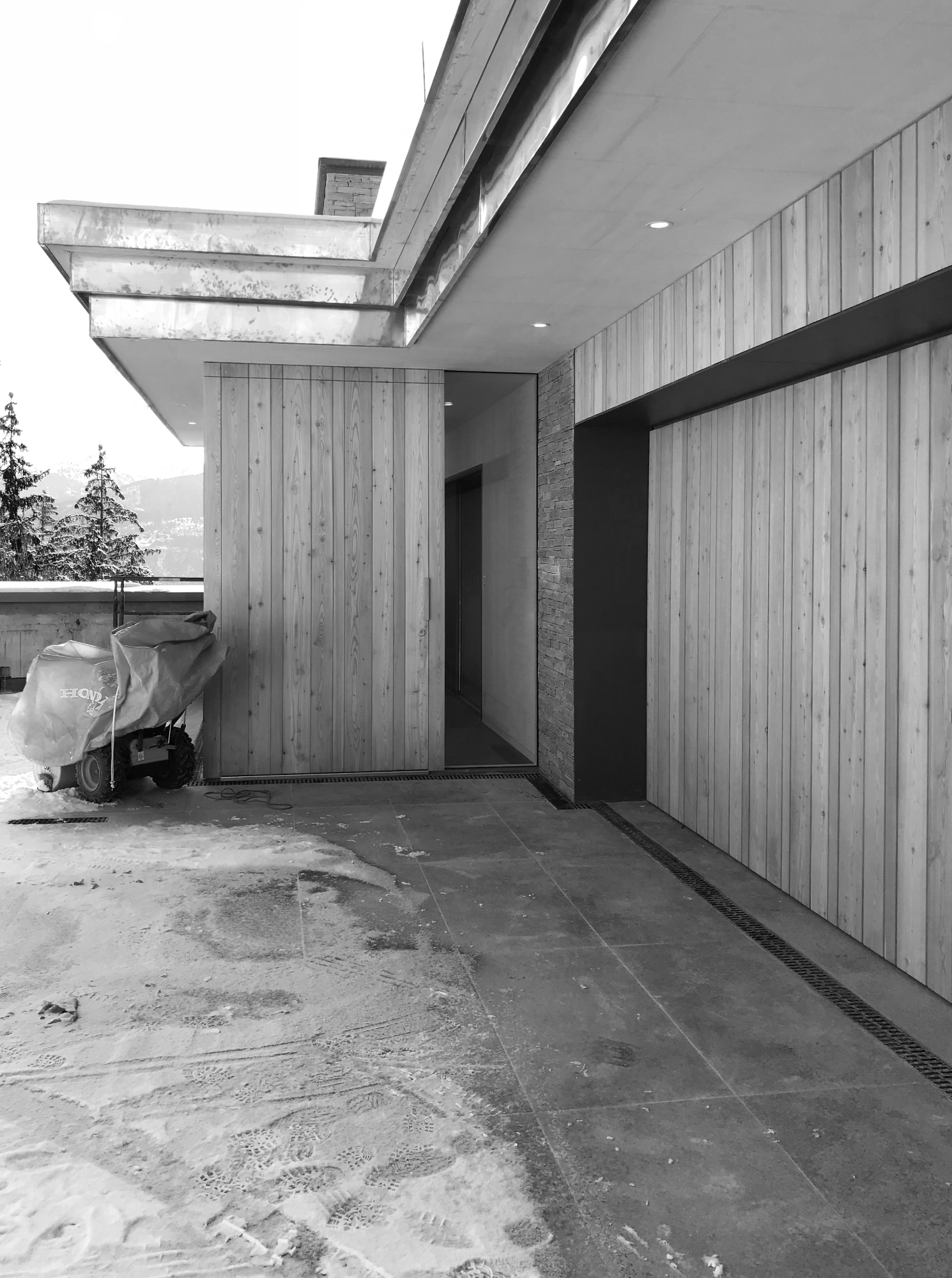
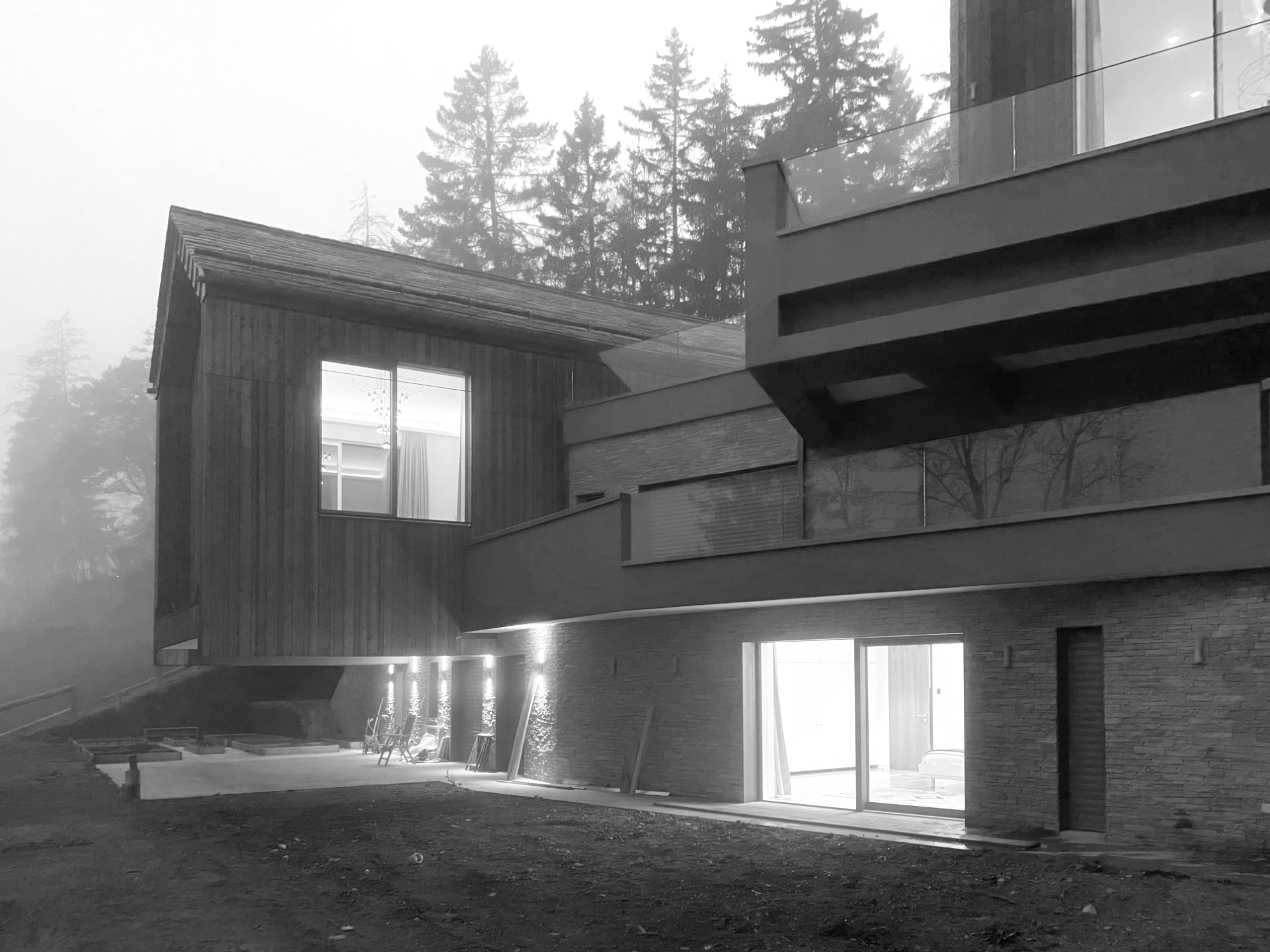
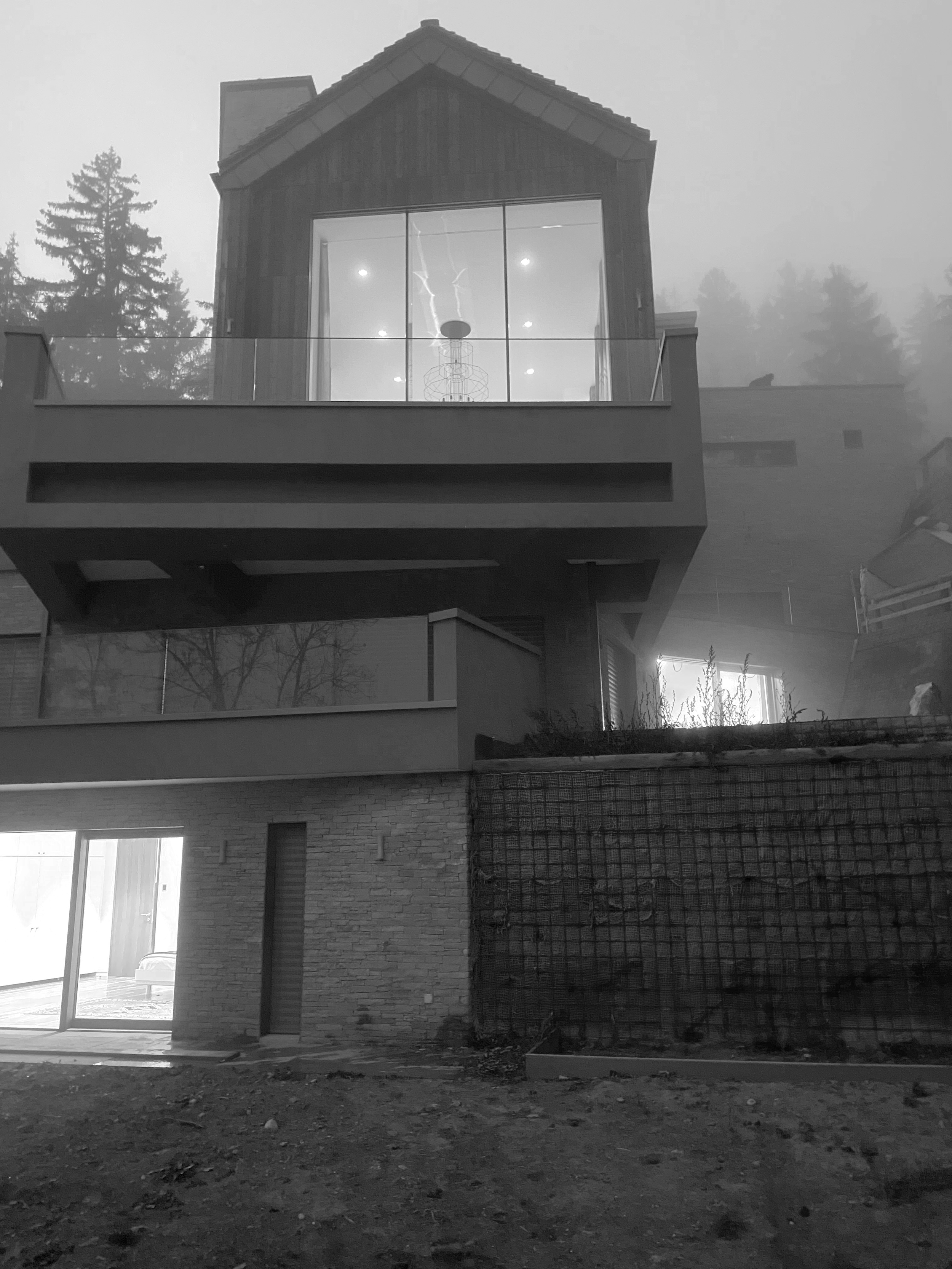
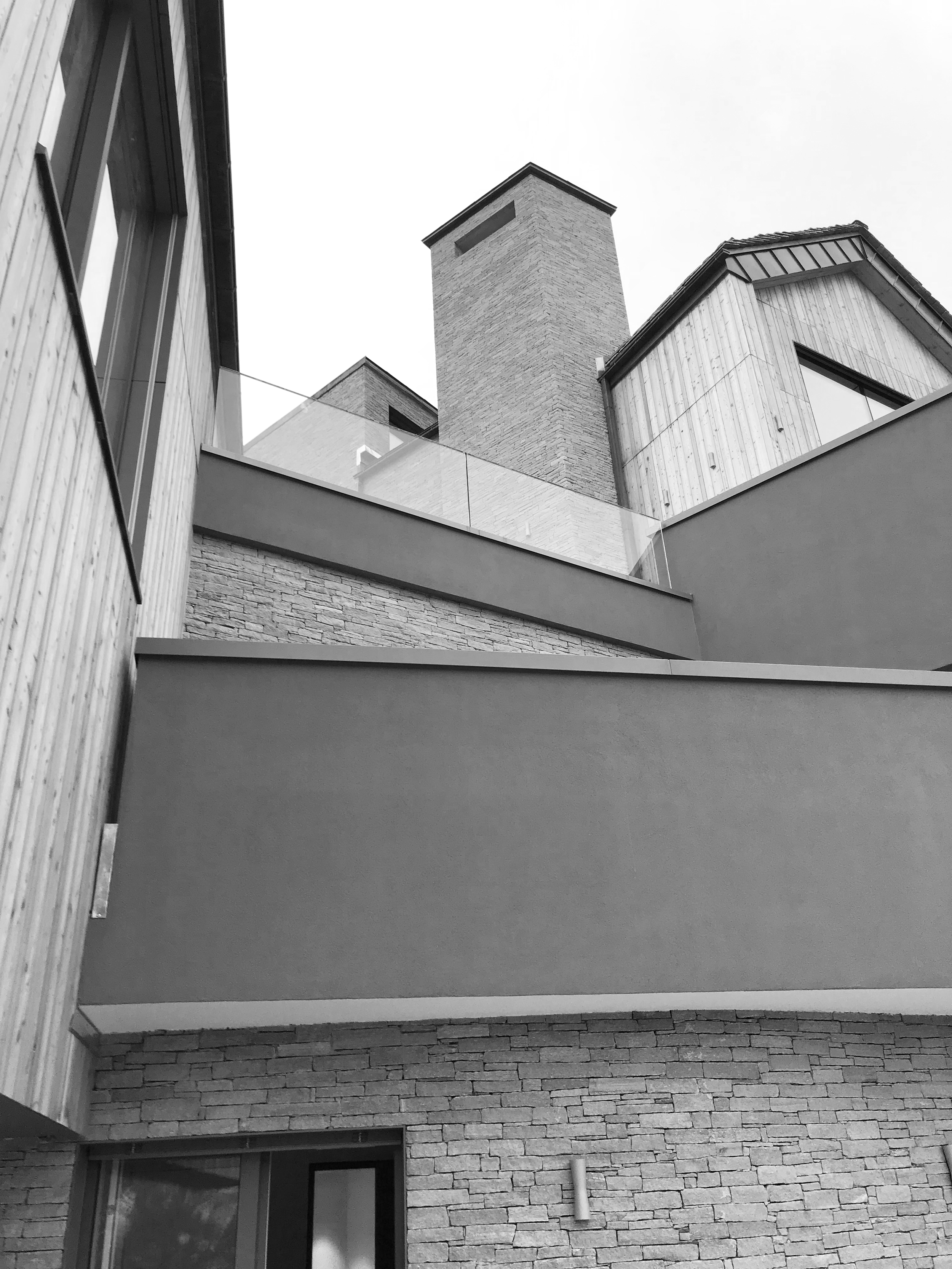
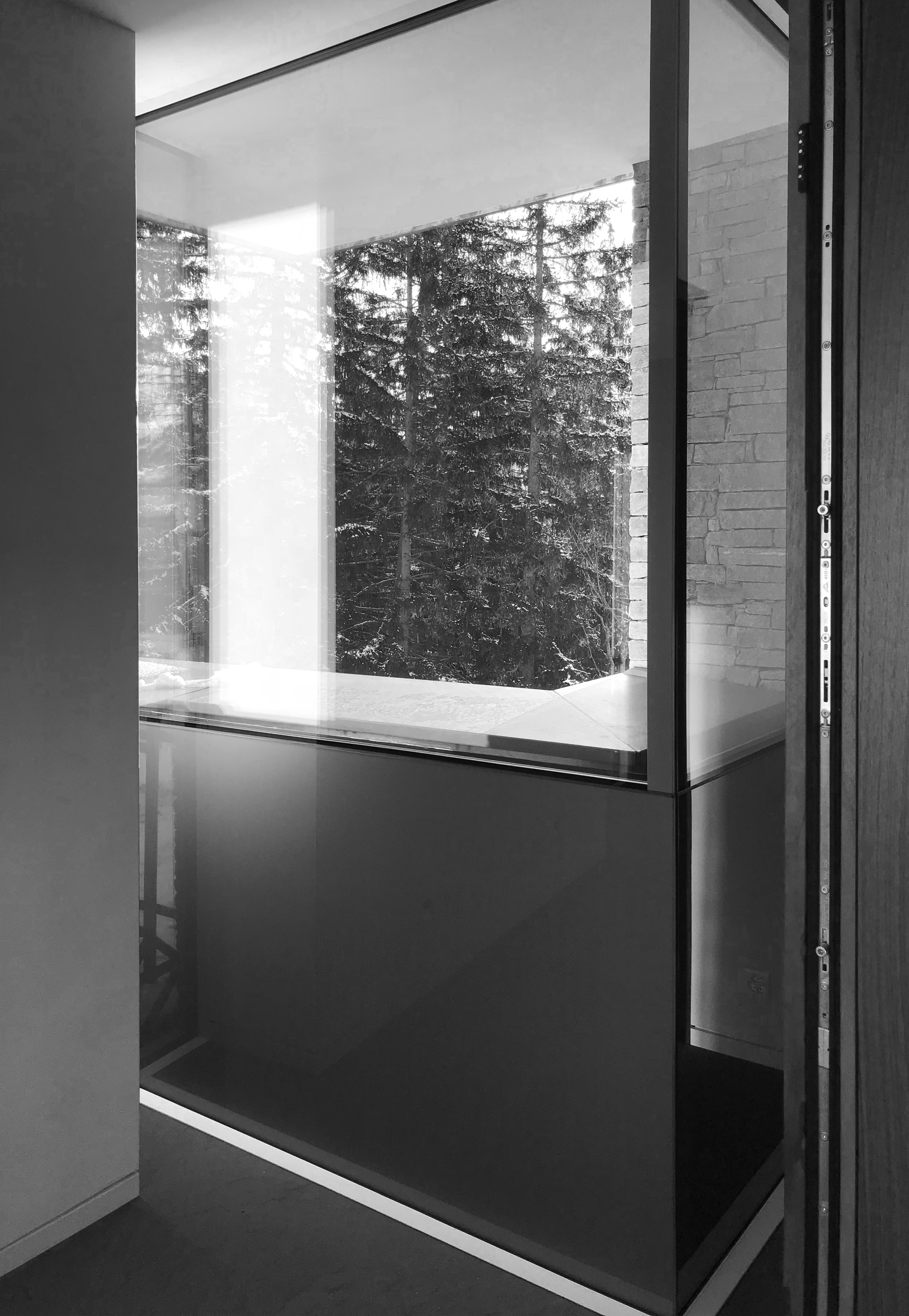

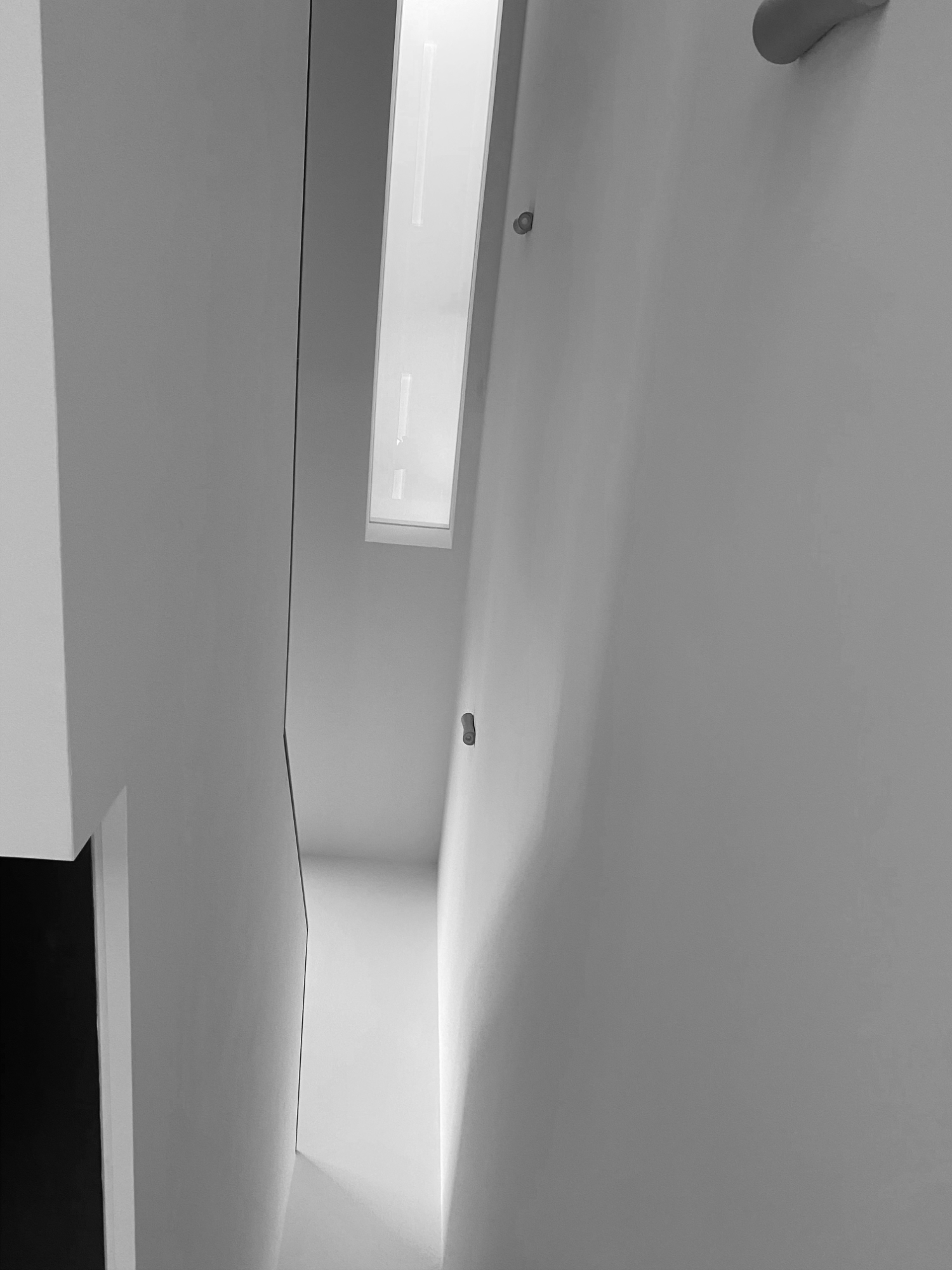
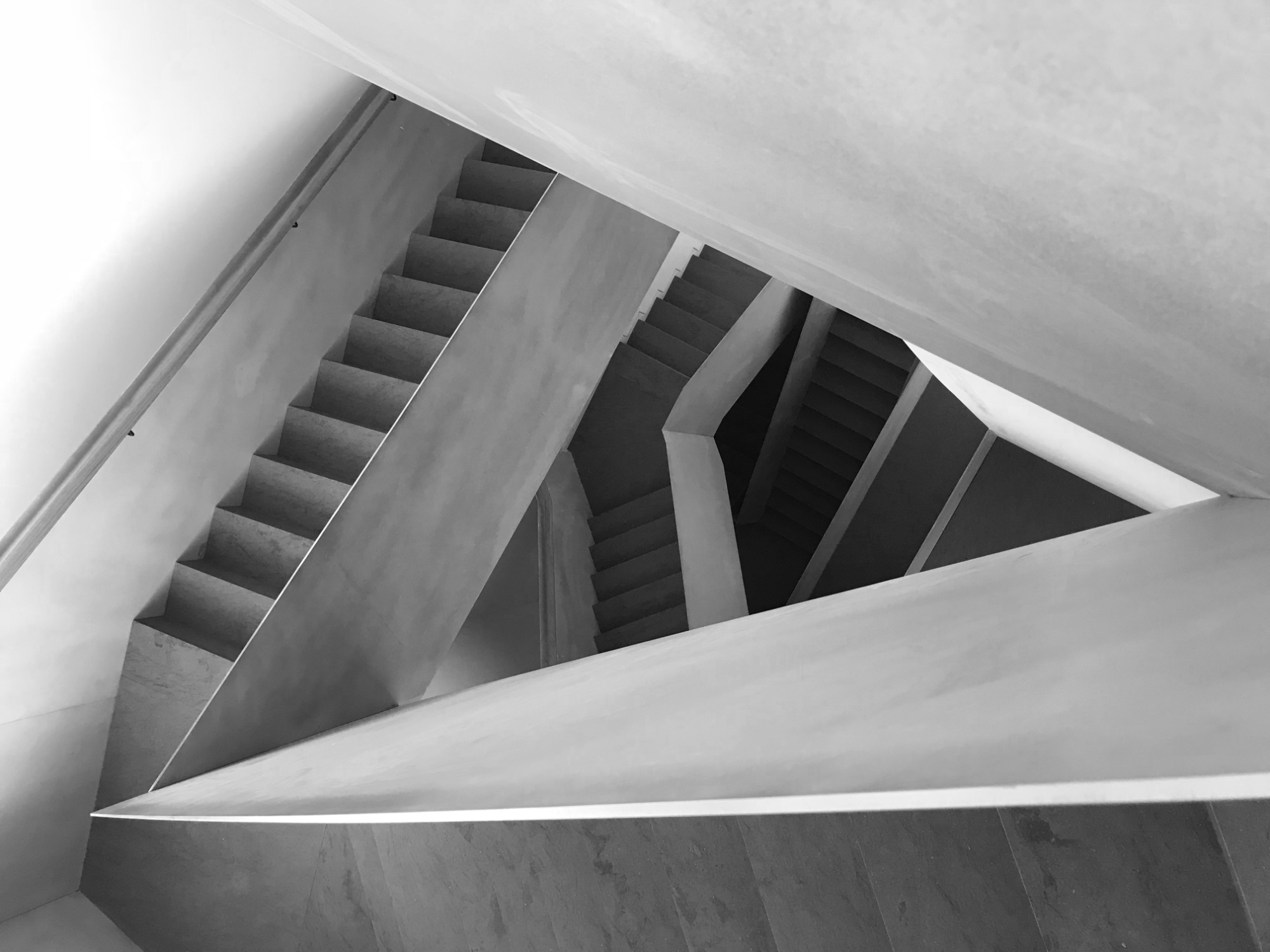
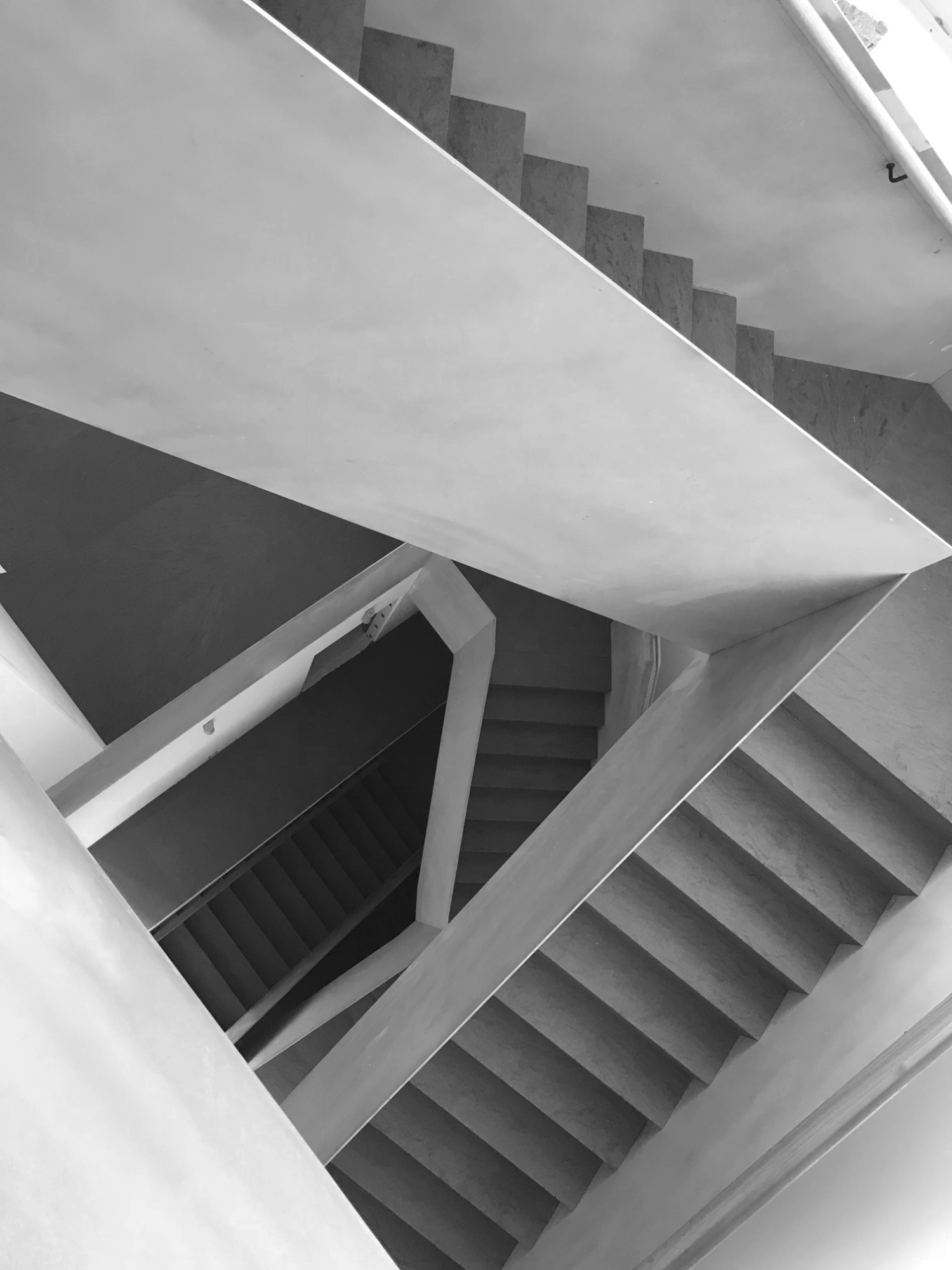
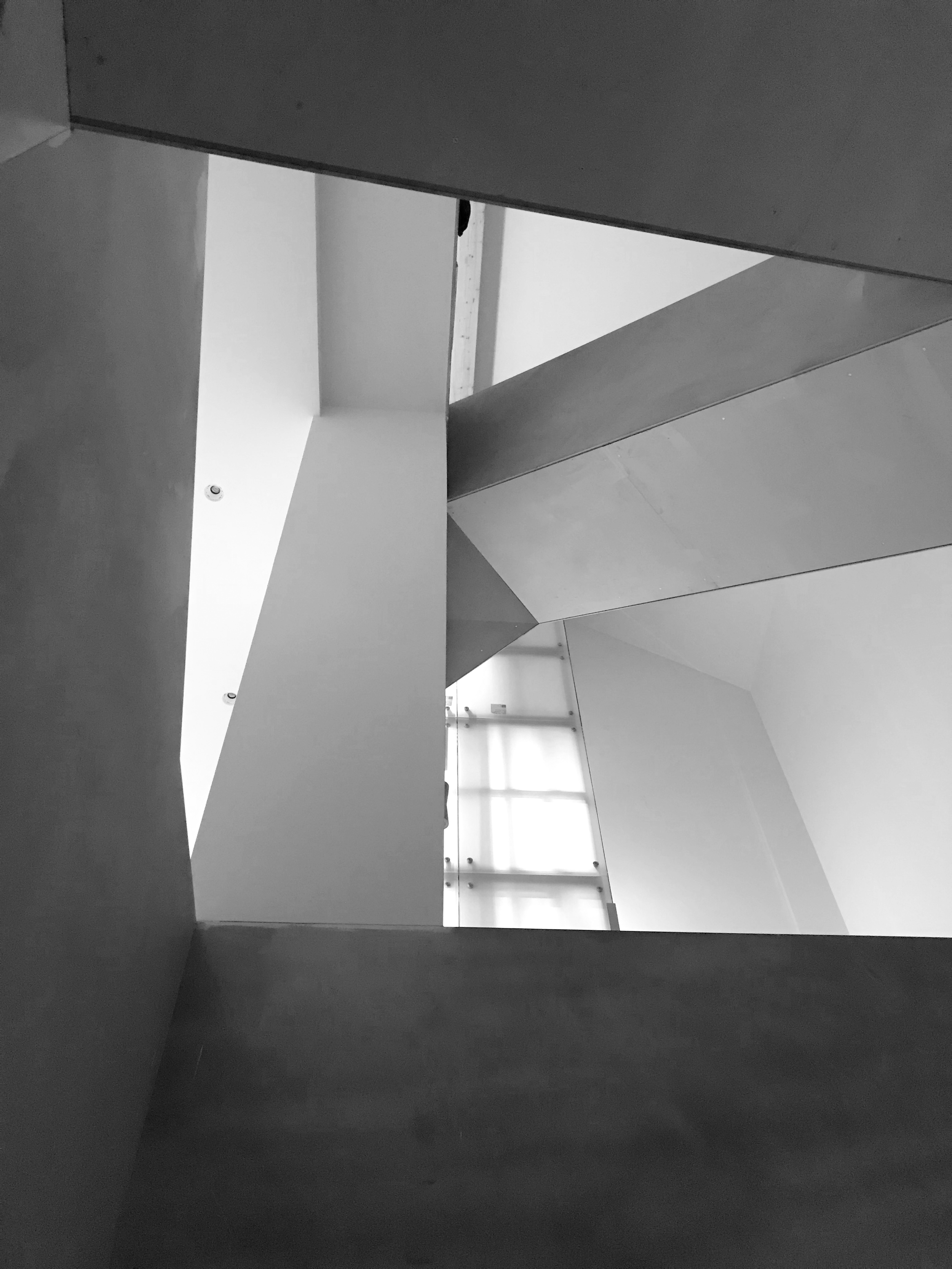
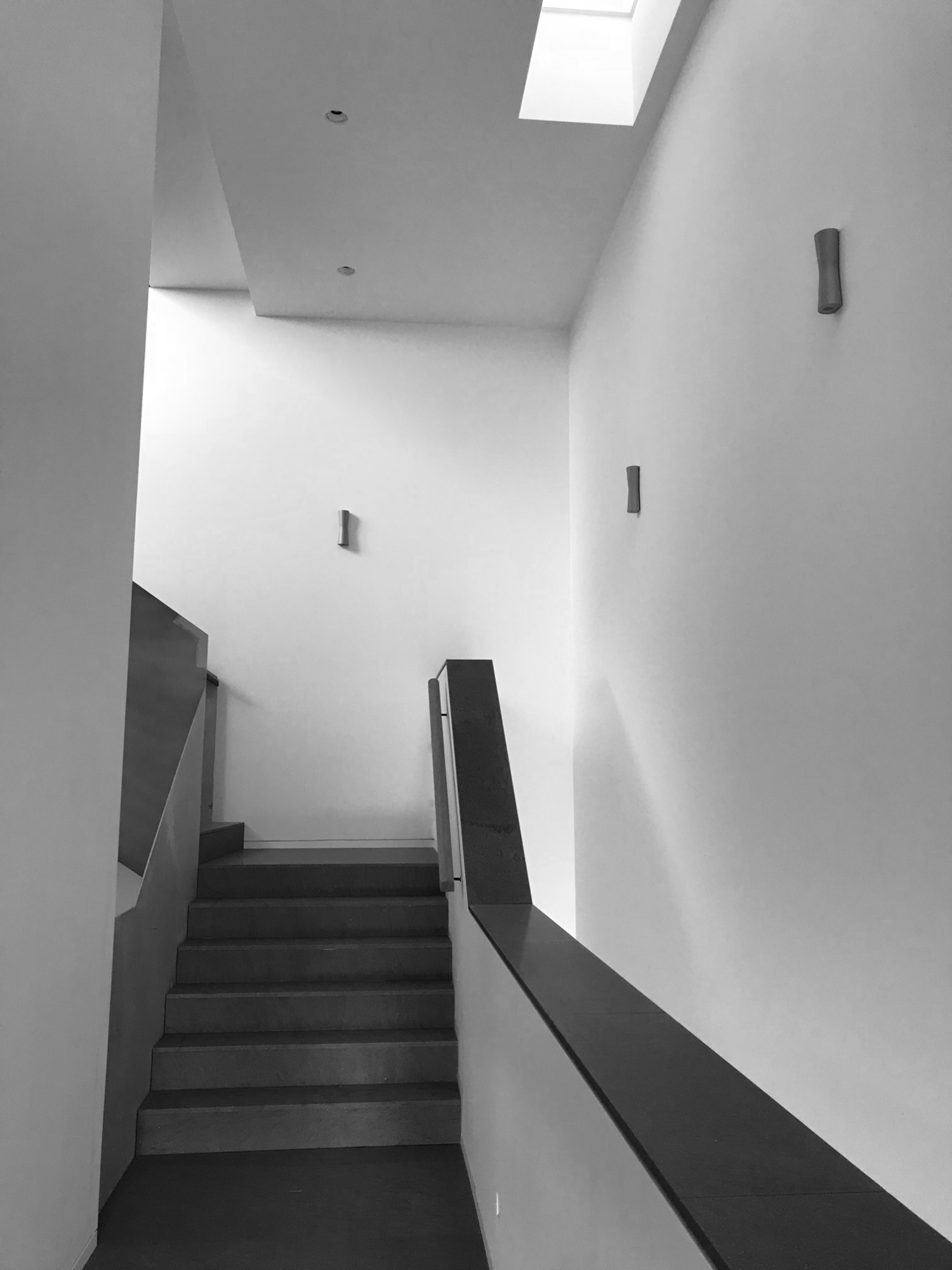
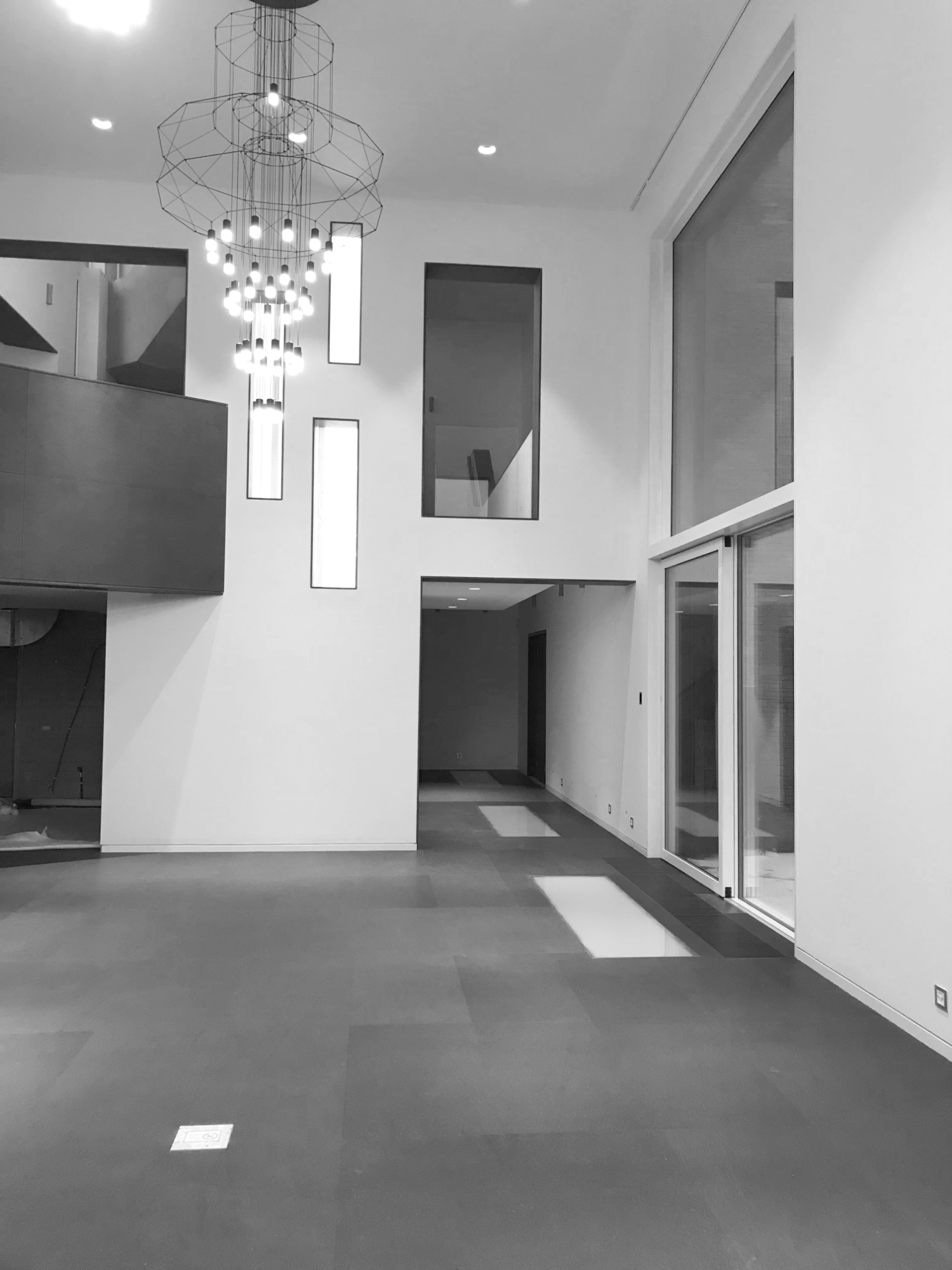
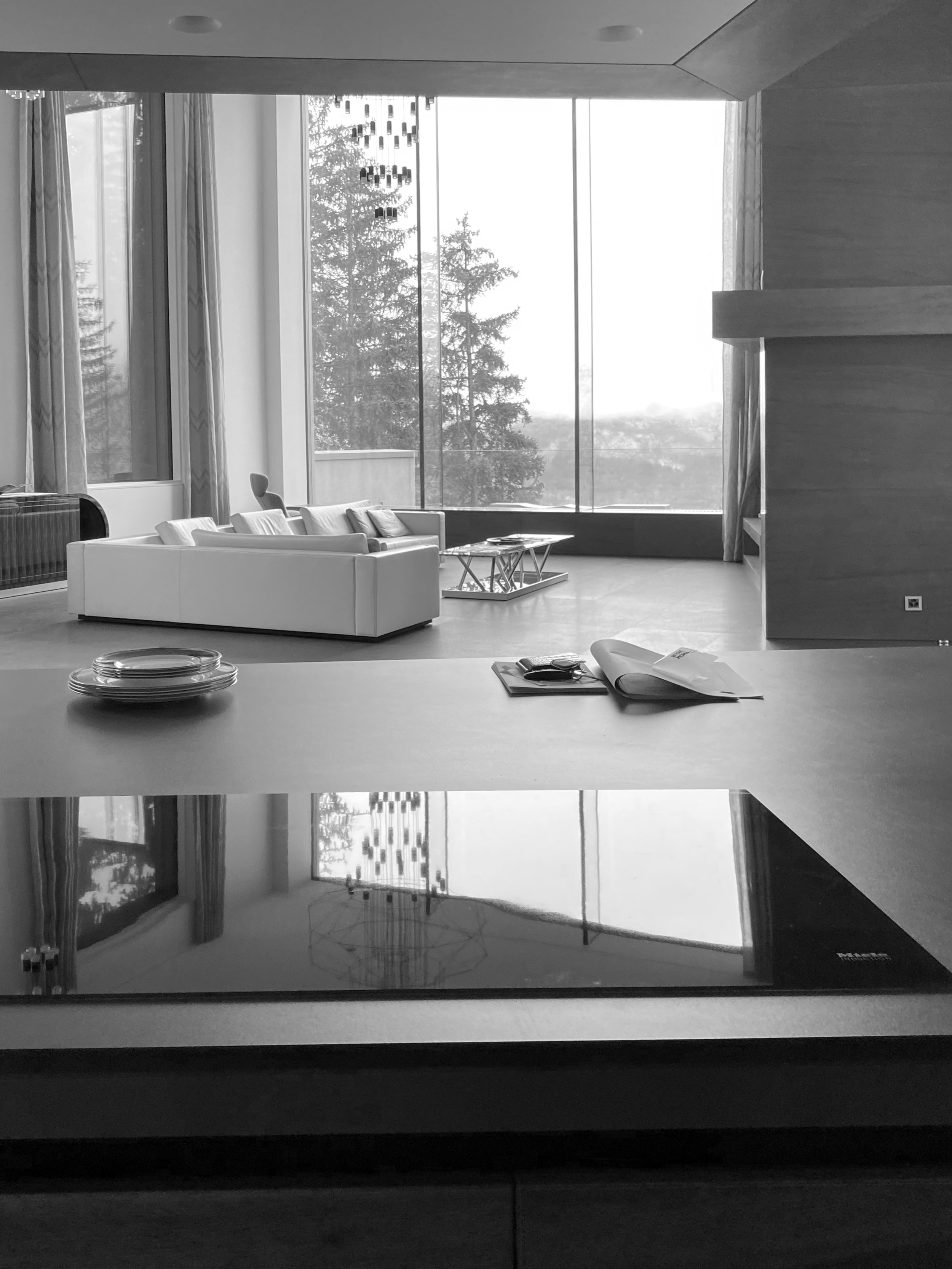
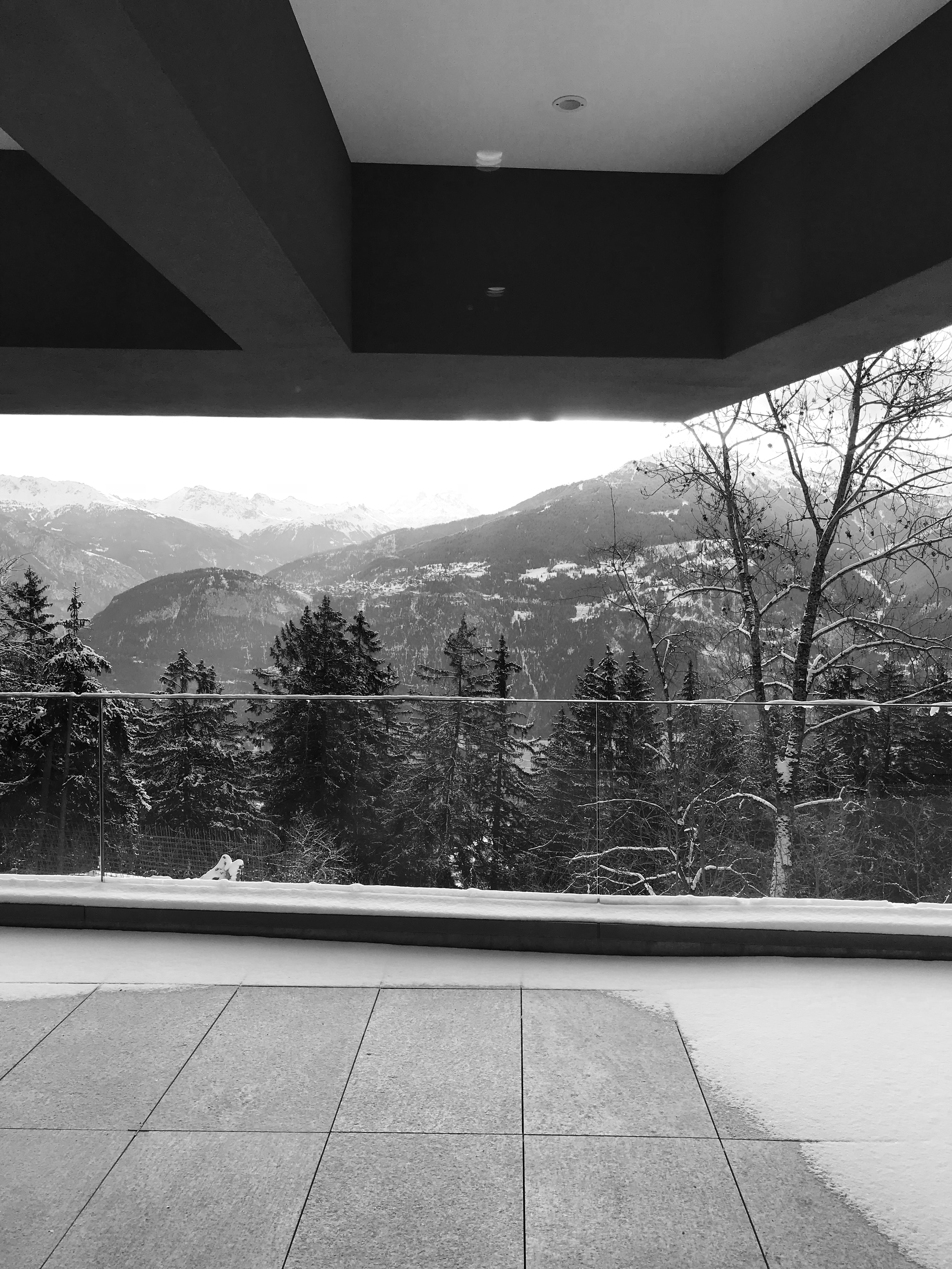
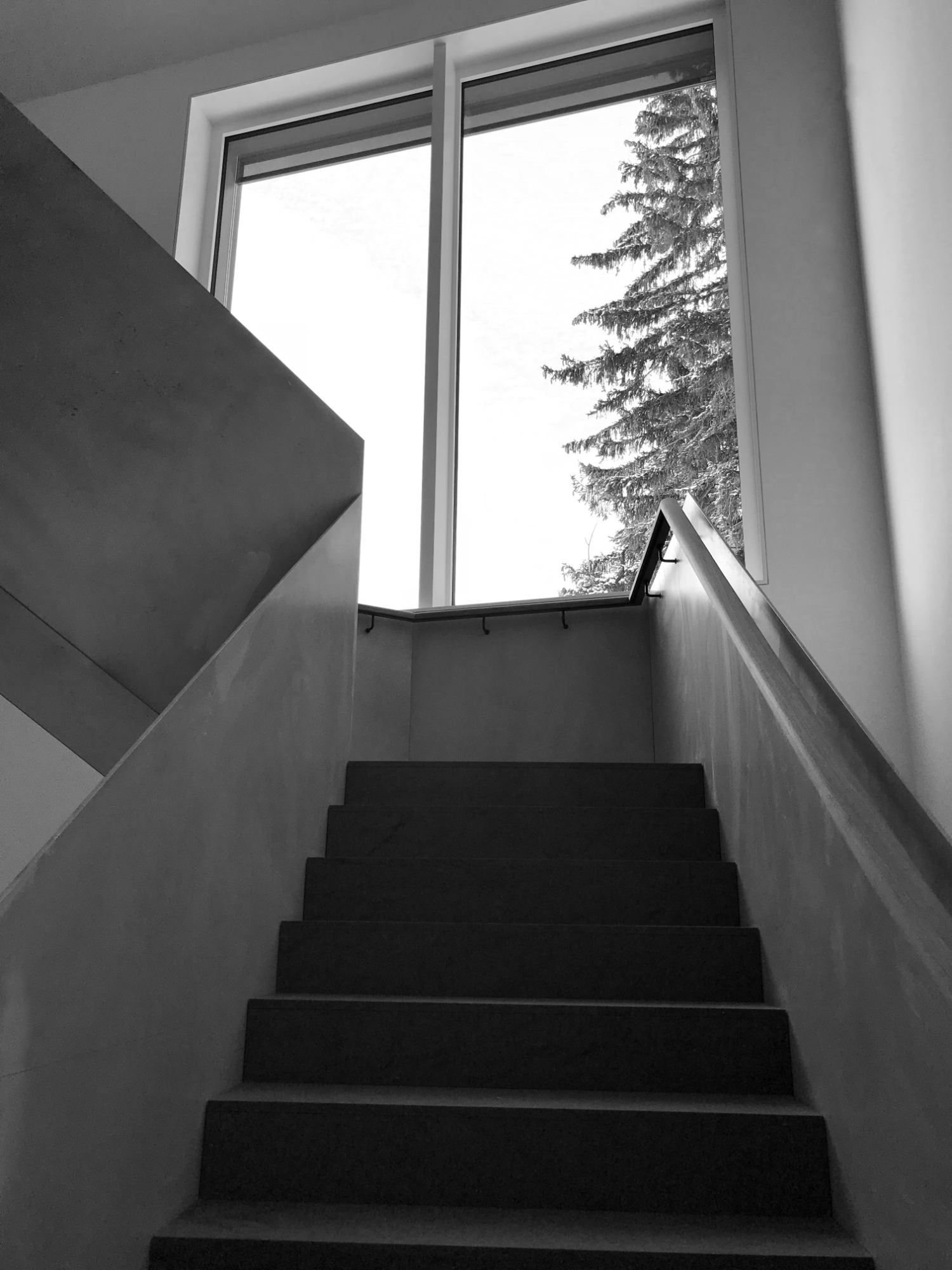
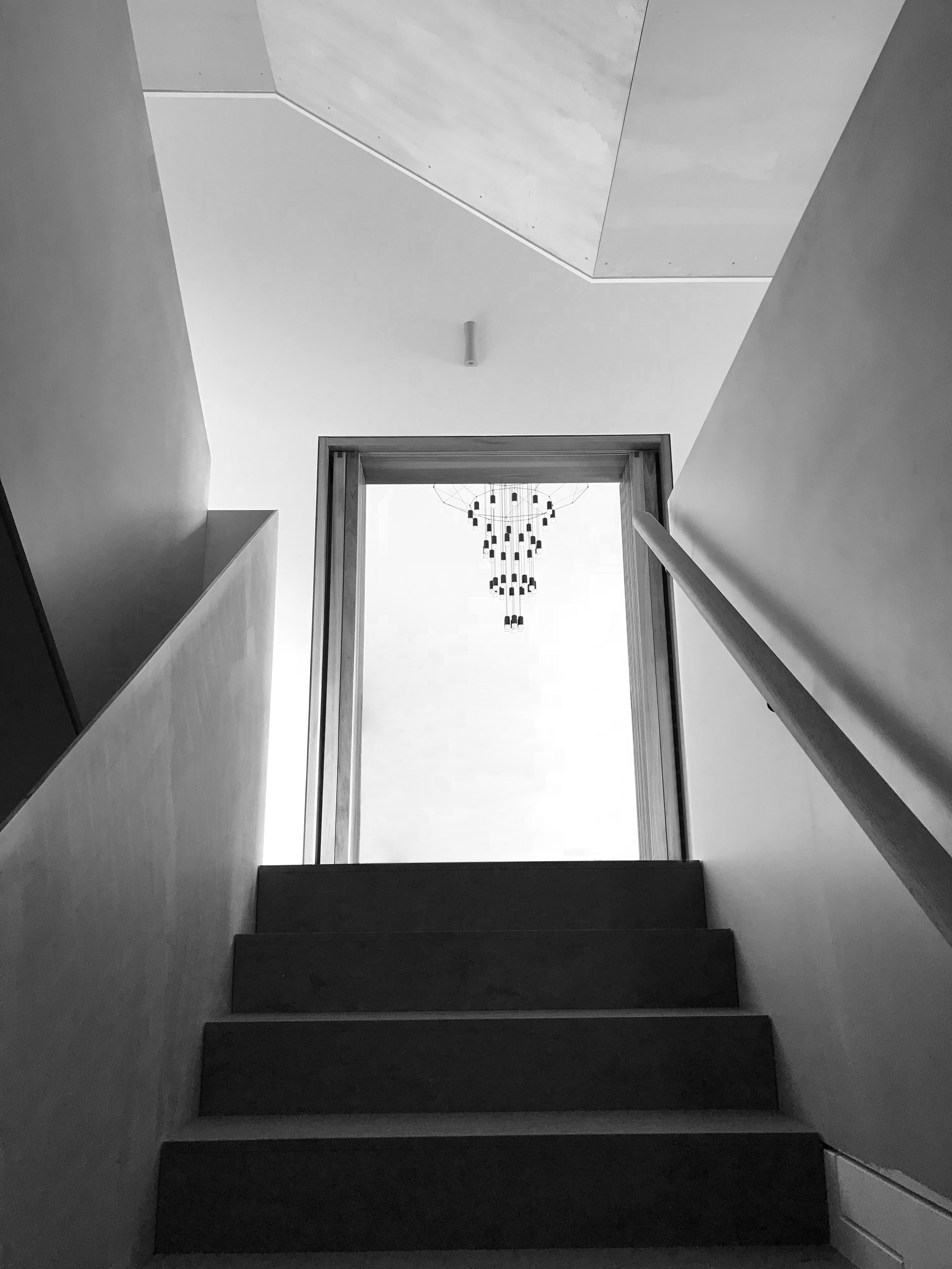

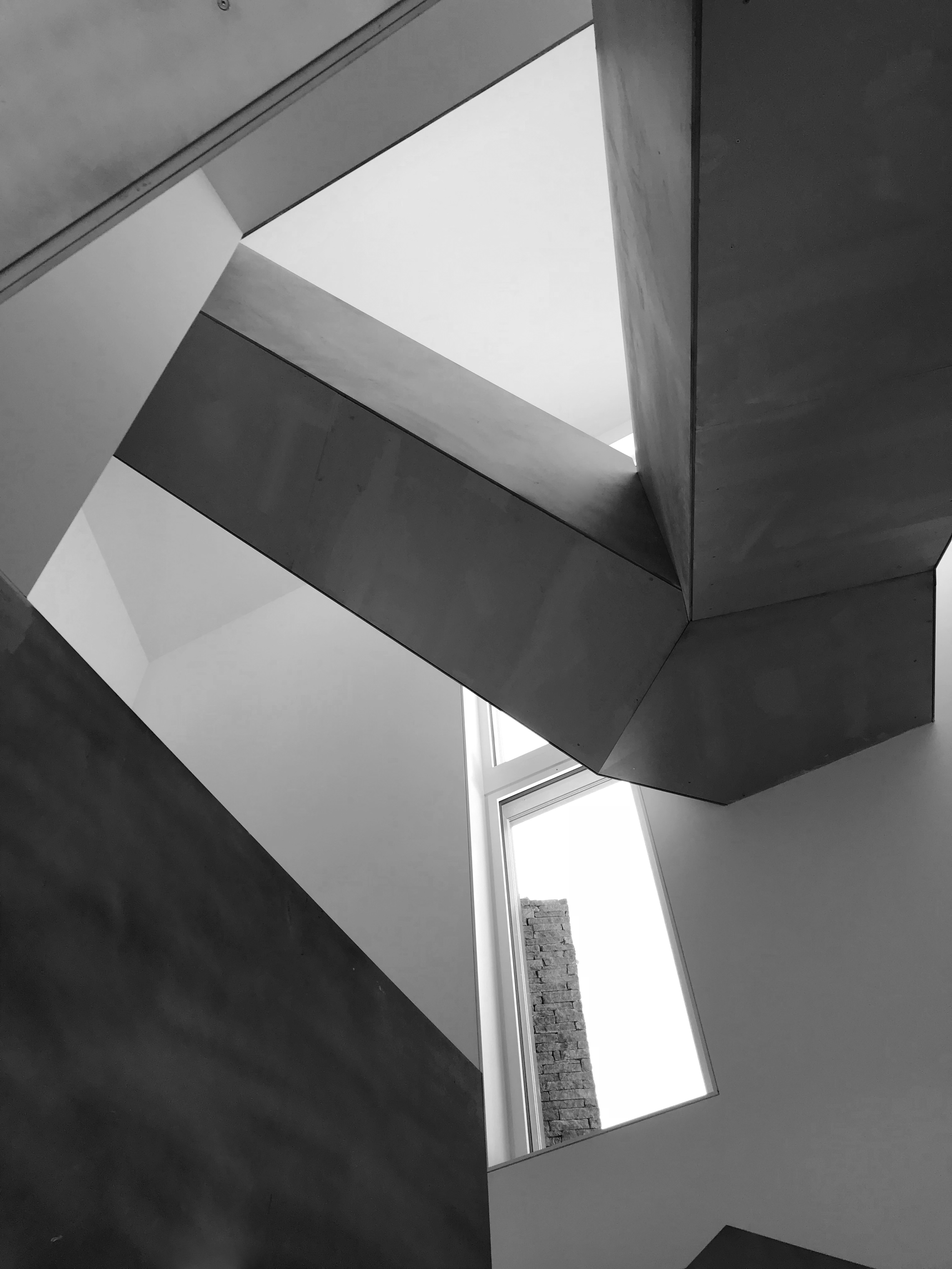
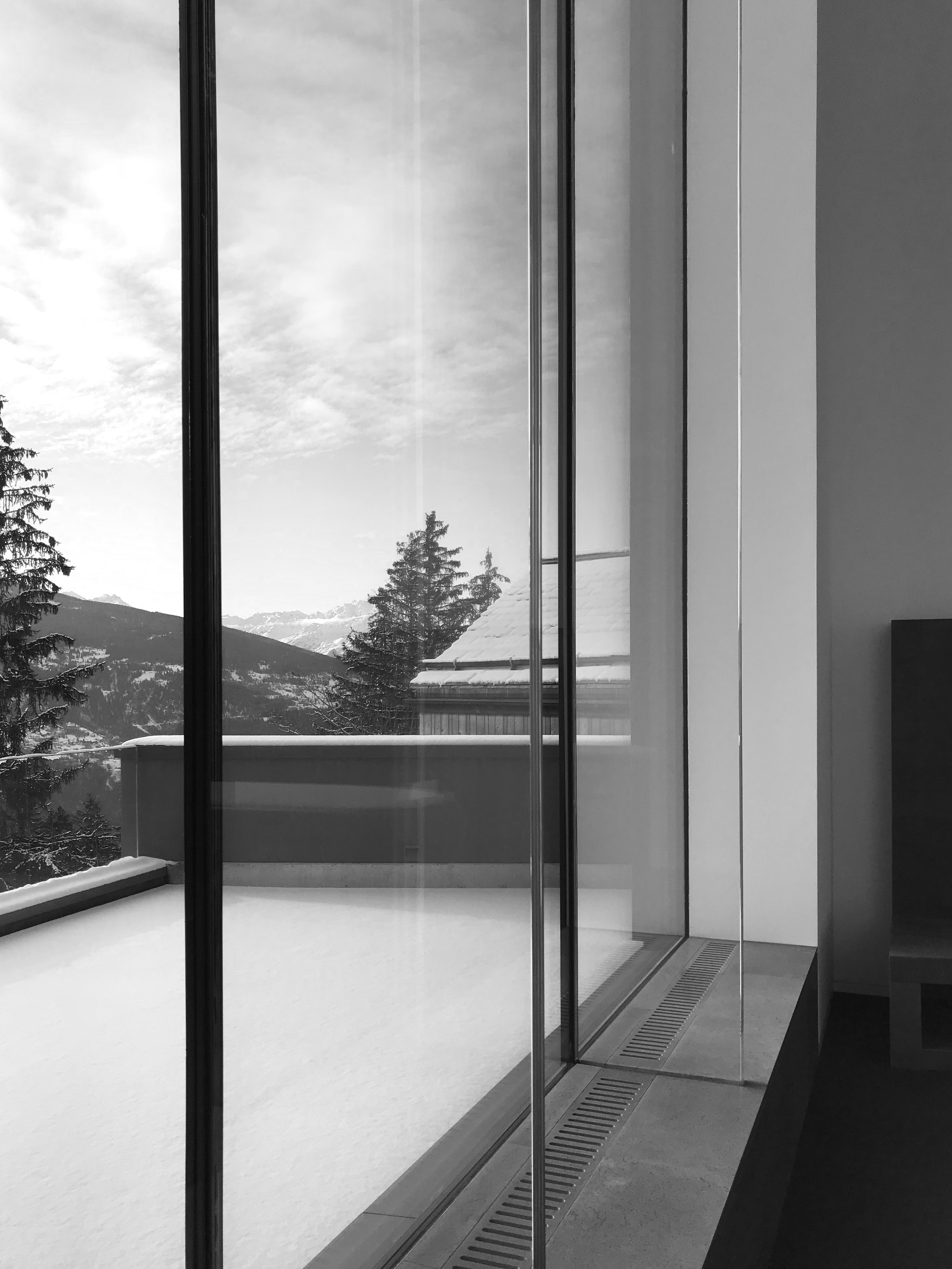
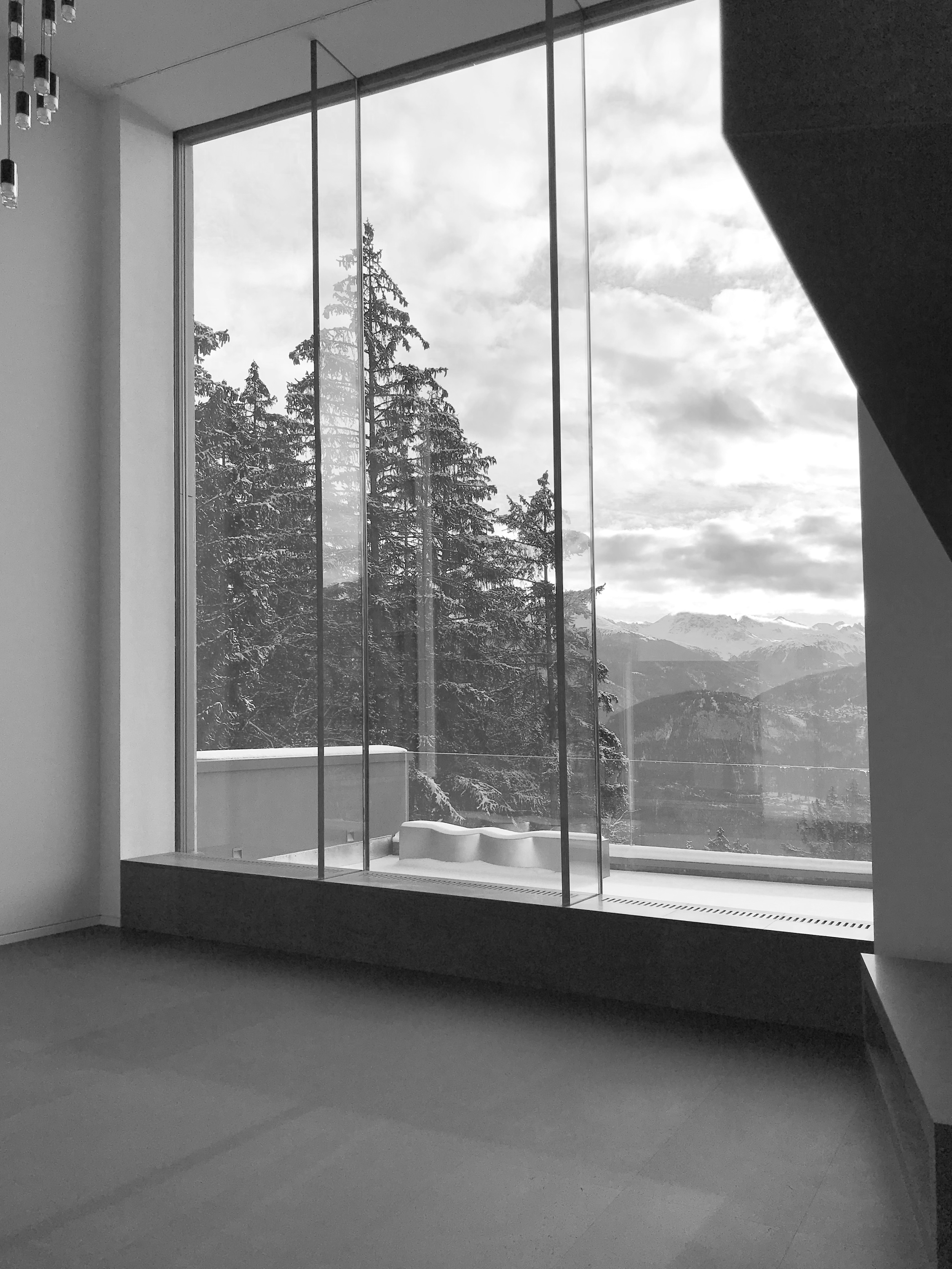
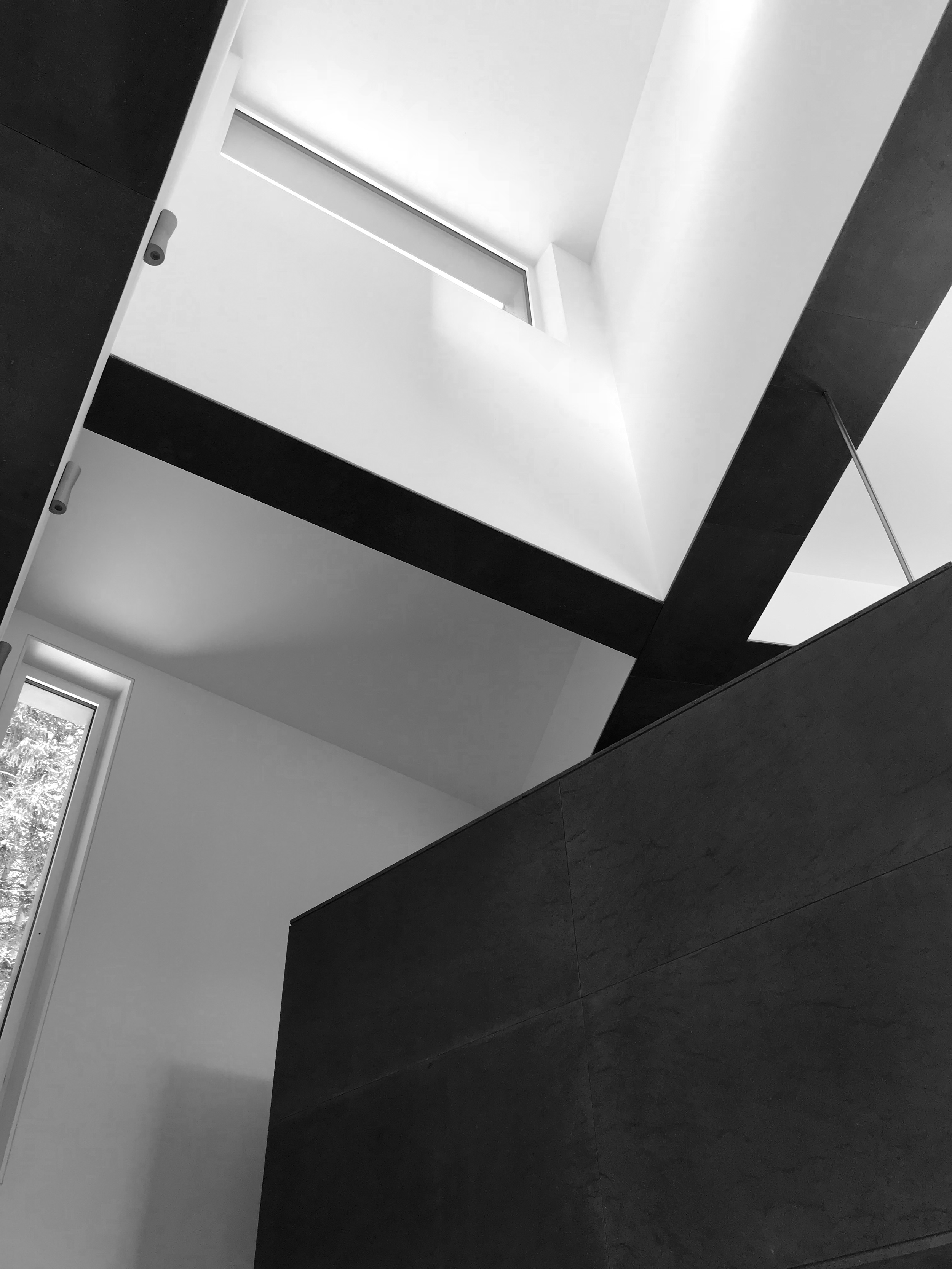
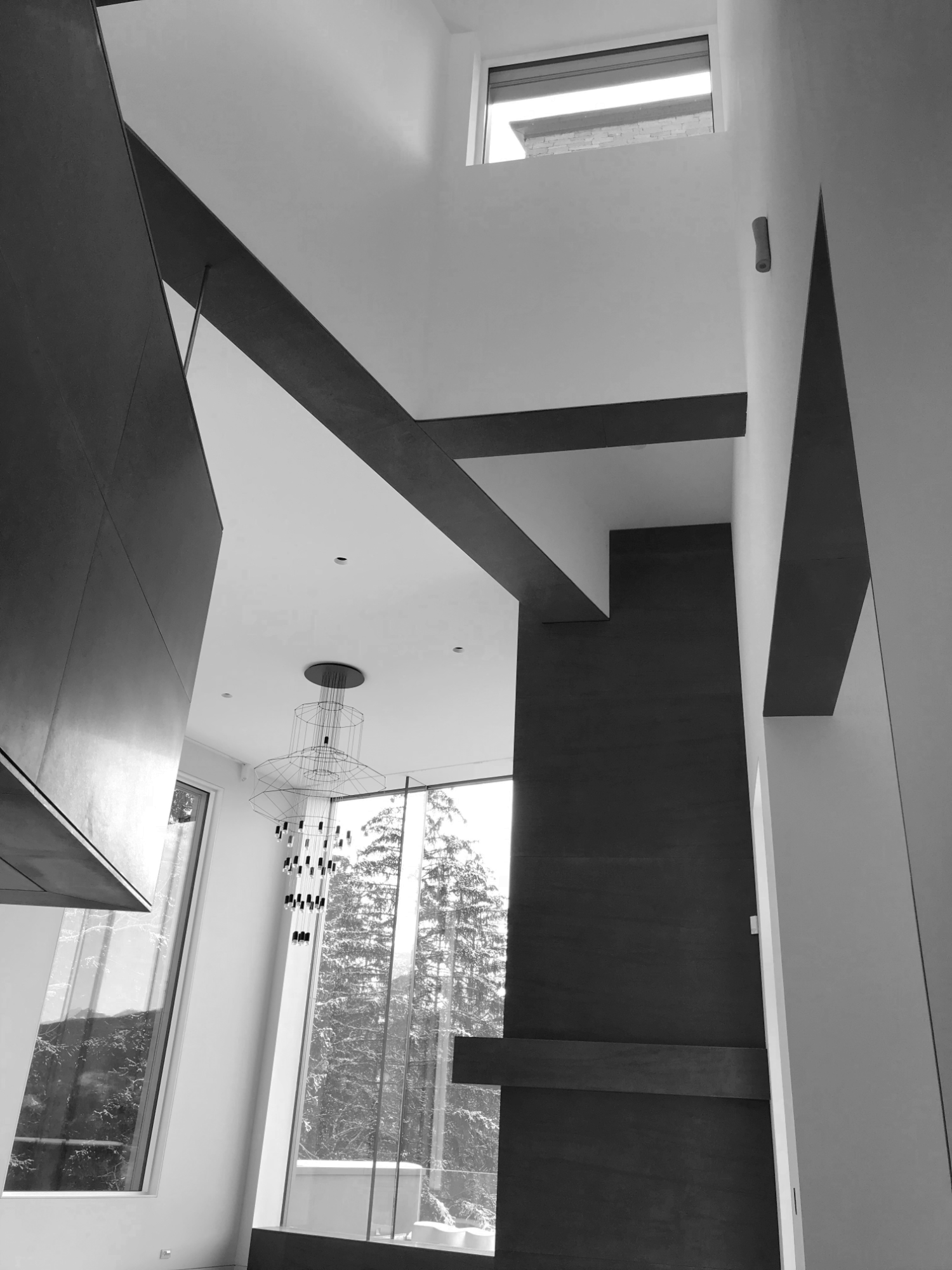
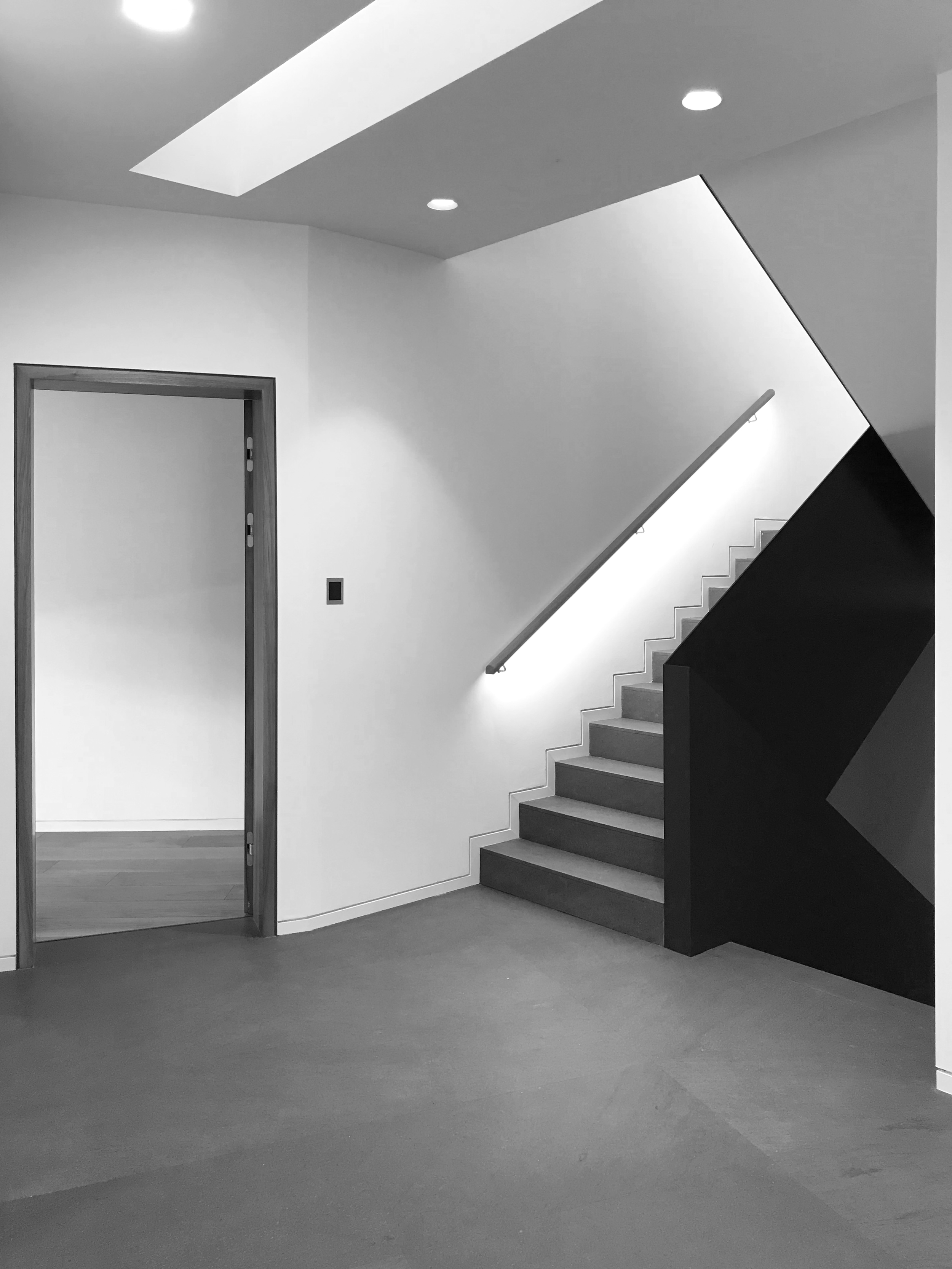
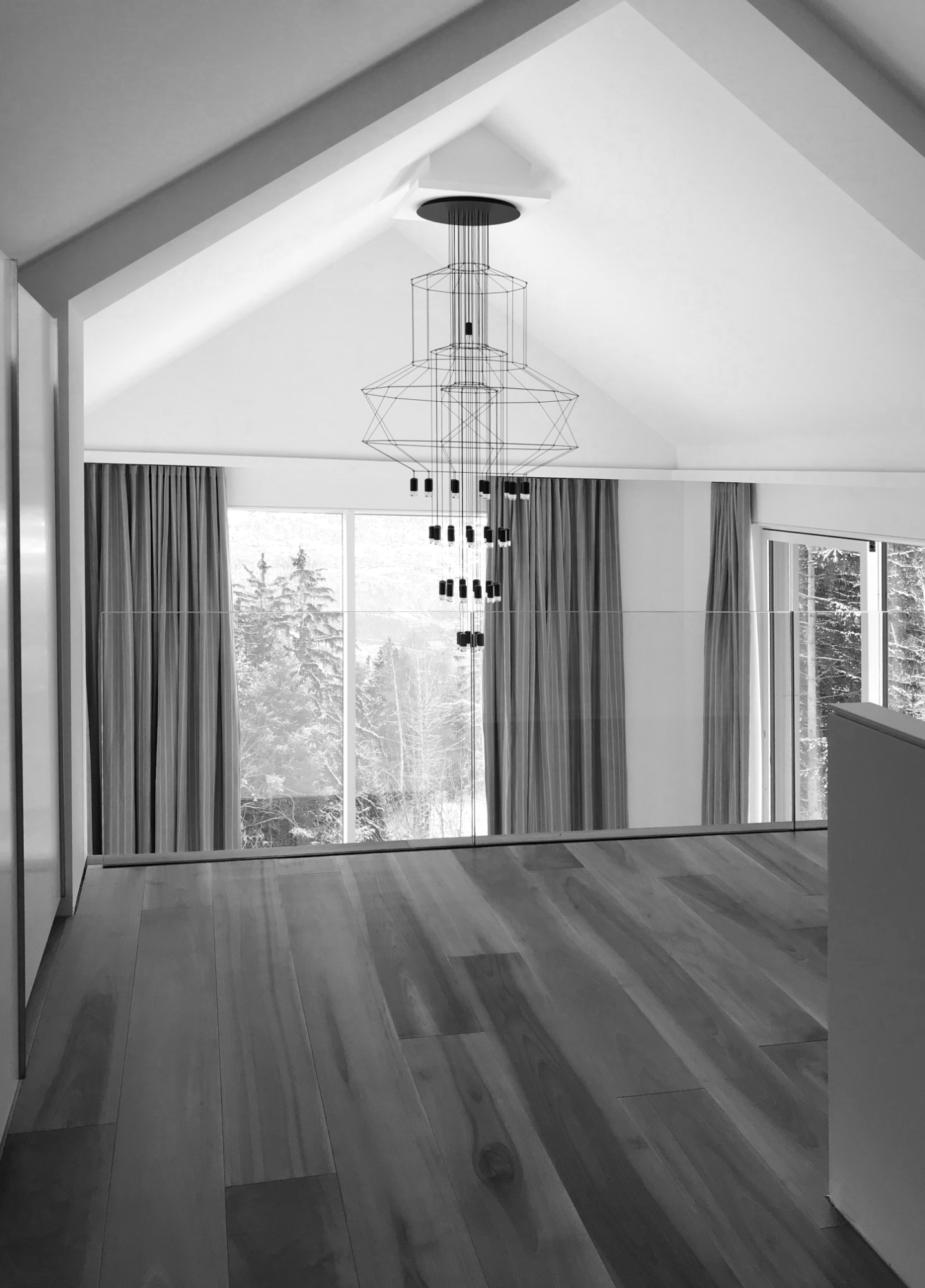
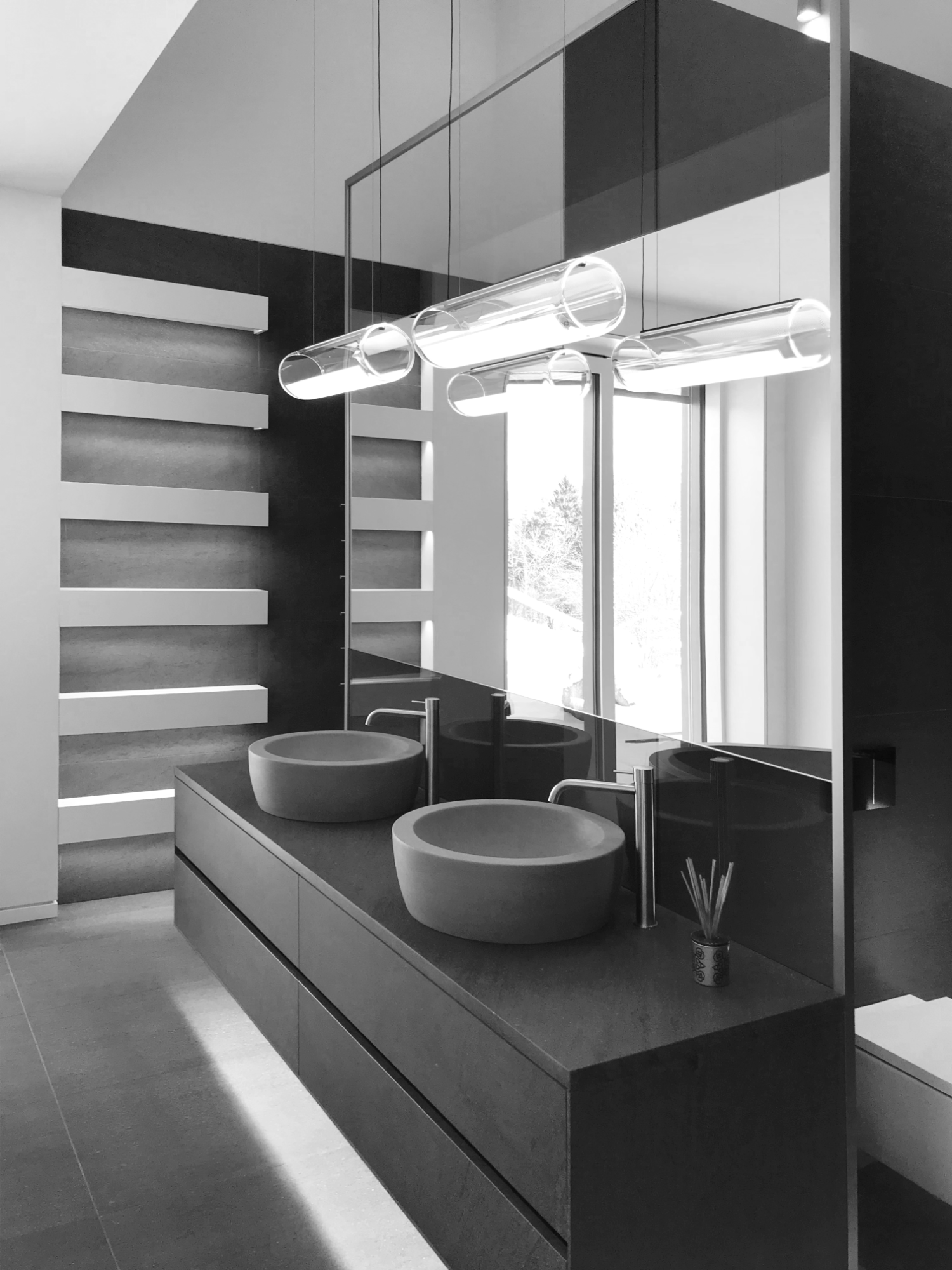
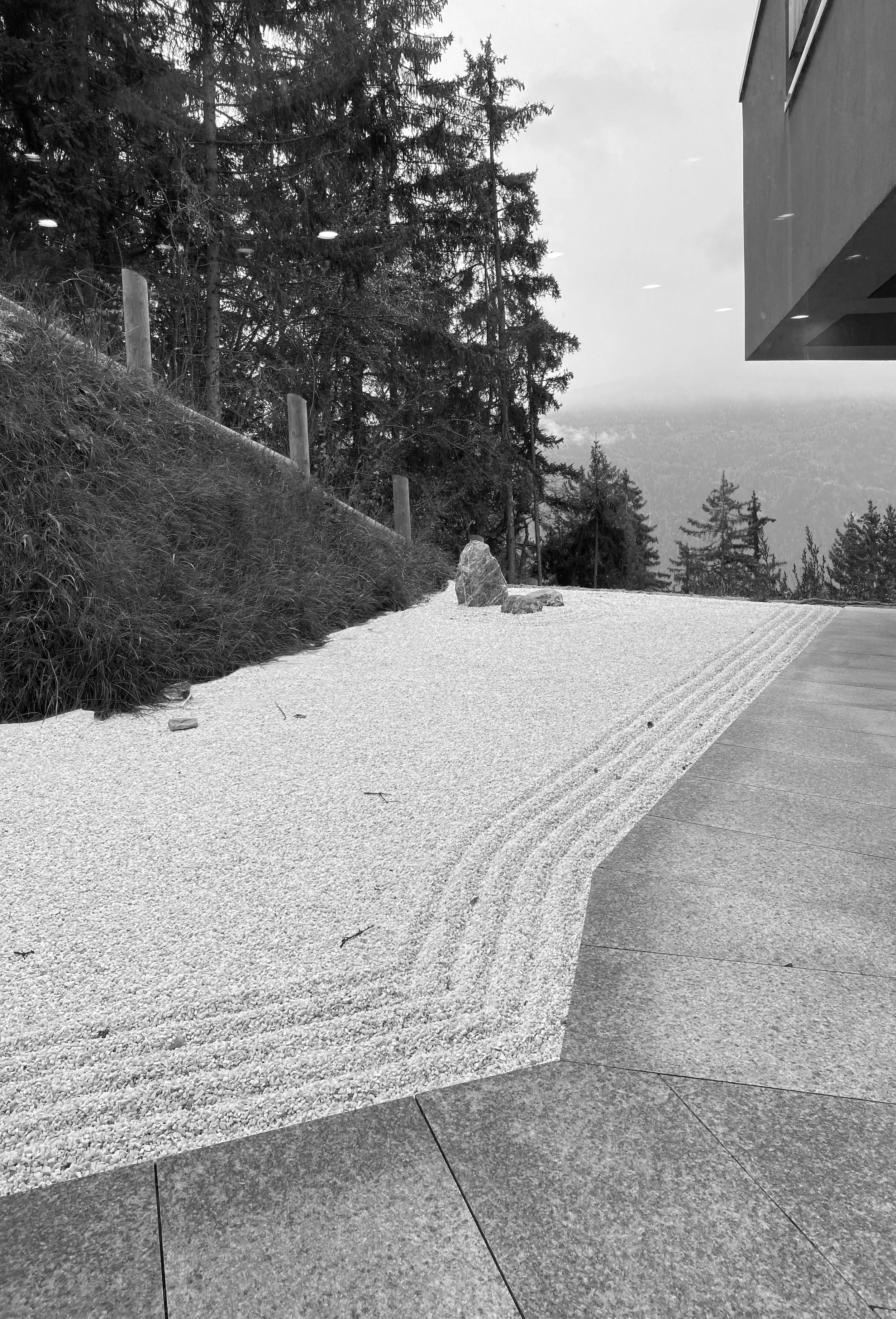
Your Custom Text Here
Contemporary Chalet in Crans Montana
This contemporary chalet, designed for a couple who sold their listed house in London to settle in the Swiss Alps, draws inspiration from the traditional architecture of alpine villages while integrating modern sensibilities and a strong connection to the natural surroundings. The primary concept behind the design is to break the large living volume into smaller, distinct blocks, mirroring the organic growth of old mountain villages, where structures are added over time in response to topography and need. This approach creates an intimate, layered composition that speaks to both the functional and aesthetic qualities of its mountainous location.
Concept and Form
The house is composed of a series of blocks, each with its own purpose and expression, which collectively form the architectural ensemble. The design seeks to achieve harmony with the landscape by employing the same principles that shaped traditional alpine settlements. In these villages, small, interconnected volumes are woven into the natural contours of the land, adapting to the slope and undulating topography. The design for this chalet echoes this approach, with the masses of the building cascading down the sloping site in a series of interconnected volumes.
Site and Terrain
The slope of the site presented a significant challenge and opportunity. The lower portion of the house is anchored into the landscape with a base crafted from durable concrete and locally sourced stone, creating a strong, grounded presence that stabilizes the structure. The stone base is terraced, stepping. down the slope in a way that allows the house to interact with the topography while reducing the visual bulk of the structure. These terraces create distinct levels that provide outdoor spaces while respecting the natural gradient of the land.
Materials and Construction
The base of the building is crafted from heavy, robust materials like concrete and stone, offering a solid foundation that is not only functional but also a visual counterpoint to the more delicate wooden upper volumes. The lower sections of the house are designed to be timeless and enduring, able to withstand the natural elements in this alpine environment.
The upper volumes, in contrast, are constructed from wood—an organic material that ties the building to its surroundings and allows for a lighter, more modern expression. These volumes are placed delicately atop the stone base, appearing to float above it. The wood serves as both a functional material for warmth and a symbolic one, connecting the structure to the tradition of alpine architecture, where timber is the primary building material.
In a nod to traditional chalet design, the roof is constructed with stone, a material commonly found in classic alpine architecture. However, the approach to this feature is distinctly modern. The stone roof is not a direct replication of old forms but is instead interpreted with a contemporary sensibility, seamlessly blending with the rest of the building’s material palette. The stone roof provides an enduring, weather-resistant covering that ties the house to its environment, while the clean, simple lines of the roof reflect a minimalist aesthetic that contrasts with the more textured base and wooden volumes.
The wooden volumes are strategically positioned to frame views of the surrounding Alps. Large windows and openings in these upper levels are oriented to maximize the breathtaking vistas, drawing the natural beauty of the landscape into the interior spaces. The carefully planned angles and orientations of these volumes ensure that the views from every room are optimally framed, creating a seamless dialogue between the inside and outside.
Sustainability and Energy Performance
In line with contemporary architectural principles, the chalet is designed with a strong commitment to sustainability and high energy efficiency. The house proudly carries the Minergie label, a certification for buildings that meet high standards of energy performance and environmental responsibility. This certification demonstrates the design’s focus on minimizing its ecological footprint while ensuring long-term comfort and efficiency for its residents. Key features of the chalet’s sustainable design include advanced insulation techniques, high-performance windows, and a highly efficient wood pellet heating and mechanical ventilation system. The use of natural materials such as locally sourced stone and wood not only integrates the building into its alpine environment but also reduces the carbon footprint associated with transport and manufacturing.
The roof’s stone construction is not only a visual connection to traditional alpine architecture but also serves a functional role in regulating temperature, reducing heat loss in winter and keeping the interior cool during warmer months.
The building’s layout and orientation are carefully considered to optimize natural light and passive solar heating, taking full advantage of the sunny alpine climate. The large windows and open spaces allow for abundant daylight to penetrate deep into the home, reducing the need for artificial lighting during the day and enhancing the connection to the surrounding environment.
Together, these sustainable design elements contribute to the chalet’s high energy performance, reducing its environmental impact while providing a comfortable and efficient living space for its inhabitants.
Spatial Experience
The internal layout of the chalet is similarly fragmented into distinct zones, each corresponding to one of the smaller volumes. This breakdown of the living space creates a sense of intimacy and comfort while offering a dynamic and organic flow throughout the home. The spatial divisions allow for both privacy and openness, with areas that are more enclosed for quiet relaxation and others that are expansive for socializing and entertaining.
The main living space, located at the heart of the chalet, features a high-volume ceiling, creating a sense of openness and grandeur. A massive, floor-to-ceiling window in this central area serves as a key architectural feature, framing the breathtaking views of the surrounding Alps while flooding the space with abundant natural sunlight. This large window not only enhances the visual connection with the alpine views of the valley but also promotes passive solar heating, contributing to the chalet's energy efficiency and creating a bright, welcoming atmosphere throughout the day.
Each volume, while connected, retains its individuality, much like the varied forms of buildings in an alpine village. These distinctions in the spaces reflect the diverse needs and moods of the residents while promoting a feeling of a home that grows and evolves with time, much like the landscape itself.
The design of this contemporary chalet in the Swiss Alps is a careful balance of tradition and innovation. Through the use of broken-down volumes, stone and concrete at the base, timber on the upper floors, a modern stone roof, and a commitment to sustainability, the house is both anchored to the land and open to the views beyond. The result is a home that is deeply integrated into the natural environment, respectful of its alpine heritage, and yet distinctly modern in its interpretation of space, materials, and form. The house becomes not only a sanctuary for its owners but also a reflection of the timeless relationship between architecture and the mountainous landscape, while also setting a benchmark for sustainable living in the heart of the Swiss Alps.
Project Management / Solutions Partners, Crans Montana.
Interior architecture / Belsize Architects, London.
Structural Engineers / Cordonnier et Rey, Sierre.
Wood engineering / André SA, Yens
CVSE engineering / Physeos, Sion
Contemporary Chalet in Crans Montana
This contemporary chalet, designed for a couple who sold their listed house in London to settle in the Swiss Alps, draws inspiration from the traditional architecture of alpine villages while integrating modern sensibilities and a strong connection to the natural surroundings. The primary concept behind the design is to break the large living volume into smaller, distinct blocks, mirroring the organic growth of old mountain villages, where structures are added over time in response to topography and need. This approach creates an intimate, layered composition that speaks to both the functional and aesthetic qualities of its mountainous location.
Concept and Form
The house is composed of a series of blocks, each with its own purpose and expression, which collectively form the architectural ensemble. The design seeks to achieve harmony with the landscape by employing the same principles that shaped traditional alpine settlements. In these villages, small, interconnected volumes are woven into the natural contours of the land, adapting to the slope and undulating topography. The design for this chalet echoes this approach, with the masses of the building cascading down the sloping site in a series of interconnected volumes.
Site and Terrain
The slope of the site presented a significant challenge and opportunity. The lower portion of the house is anchored into the landscape with a base crafted from durable concrete and locally sourced stone, creating a strong, grounded presence that stabilizes the structure. The stone base is terraced, stepping. down the slope in a way that allows the house to interact with the topography while reducing the visual bulk of the structure. These terraces create distinct levels that provide outdoor spaces while respecting the natural gradient of the land.
Materials and Construction
The base of the building is crafted from heavy, robust materials like concrete and stone, offering a solid foundation that is not only functional but also a visual counterpoint to the more delicate wooden upper volumes. The lower sections of the house are designed to be timeless and enduring, able to withstand the natural elements in this alpine environment.
The upper volumes, in contrast, are constructed from wood—an organic material that ties the building to its surroundings and allows for a lighter, more modern expression. These volumes are placed delicately atop the stone base, appearing to float above it. The wood serves as both a functional material for warmth and a symbolic one, connecting the structure to the tradition of alpine architecture, where timber is the primary building material.
In a nod to traditional chalet design, the roof is constructed with stone, a material commonly found in classic alpine architecture. However, the approach to this feature is distinctly modern. The stone roof is not a direct replication of old forms but is instead interpreted with a contemporary sensibility, seamlessly blending with the rest of the building’s material palette. The stone roof provides an enduring, weather-resistant covering that ties the house to its environment, while the clean, simple lines of the roof reflect a minimalist aesthetic that contrasts with the more textured base and wooden volumes.
The wooden volumes are strategically positioned to frame views of the surrounding Alps. Large windows and openings in these upper levels are oriented to maximize the breathtaking vistas, drawing the natural beauty of the landscape into the interior spaces. The carefully planned angles and orientations of these volumes ensure that the views from every room are optimally framed, creating a seamless dialogue between the inside and outside.
Sustainability and Energy Performance
In line with contemporary architectural principles, the chalet is designed with a strong commitment to sustainability and high energy efficiency. The house proudly carries the Minergie label, a certification for buildings that meet high standards of energy performance and environmental responsibility. This certification demonstrates the design’s focus on minimizing its ecological footprint while ensuring long-term comfort and efficiency for its residents. Key features of the chalet’s sustainable design include advanced insulation techniques, high-performance windows, and a highly efficient wood pellet heating and mechanical ventilation system. The use of natural materials such as locally sourced stone and wood not only integrates the building into its alpine environment but also reduces the carbon footprint associated with transport and manufacturing.
The roof’s stone construction is not only a visual connection to traditional alpine architecture but also serves a functional role in regulating temperature, reducing heat loss in winter and keeping the interior cool during warmer months.
The building’s layout and orientation are carefully considered to optimize natural light and passive solar heating, taking full advantage of the sunny alpine climate. The large windows and open spaces allow for abundant daylight to penetrate deep into the home, reducing the need for artificial lighting during the day and enhancing the connection to the surrounding environment.
Together, these sustainable design elements contribute to the chalet’s high energy performance, reducing its environmental impact while providing a comfortable and efficient living space for its inhabitants.
Spatial Experience
The internal layout of the chalet is similarly fragmented into distinct zones, each corresponding to one of the smaller volumes. This breakdown of the living space creates a sense of intimacy and comfort while offering a dynamic and organic flow throughout the home. The spatial divisions allow for both privacy and openness, with areas that are more enclosed for quiet relaxation and others that are expansive for socializing and entertaining.
The main living space, located at the heart of the chalet, features a high-volume ceiling, creating a sense of openness and grandeur. A massive, floor-to-ceiling window in this central area serves as a key architectural feature, framing the breathtaking views of the surrounding Alps while flooding the space with abundant natural sunlight. This large window not only enhances the visual connection with the alpine views of the valley but also promotes passive solar heating, contributing to the chalet's energy efficiency and creating a bright, welcoming atmosphere throughout the day.
Each volume, while connected, retains its individuality, much like the varied forms of buildings in an alpine village. These distinctions in the spaces reflect the diverse needs and moods of the residents while promoting a feeling of a home that grows and evolves with time, much like the landscape itself.
The design of this contemporary chalet in the Swiss Alps is a careful balance of tradition and innovation. Through the use of broken-down volumes, stone and concrete at the base, timber on the upper floors, a modern stone roof, and a commitment to sustainability, the house is both anchored to the land and open to the views beyond. The result is a home that is deeply integrated into the natural environment, respectful of its alpine heritage, and yet distinctly modern in its interpretation of space, materials, and form. The house becomes not only a sanctuary for its owners but also a reflection of the timeless relationship between architecture and the mountainous landscape, while also setting a benchmark for sustainable living in the heart of the Swiss Alps.
Project Management / Solutions Partners, Crans Montana.
Interior architecture / Belsize Architects, London.
Structural Engineers / Cordonnier et Rey, Sierre.
Wood engineering / André SA, Yens
CVSE engineering / Physeos, Sion
Route principale 32, 2612 Cormoret, Berne, CH
mob +41 789698544